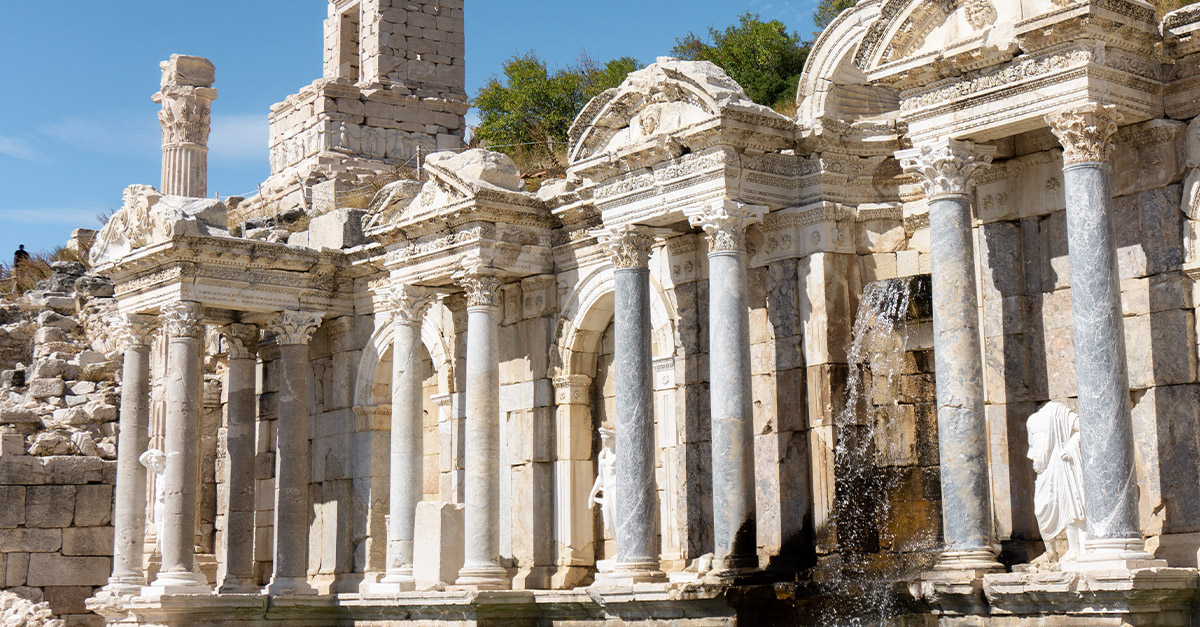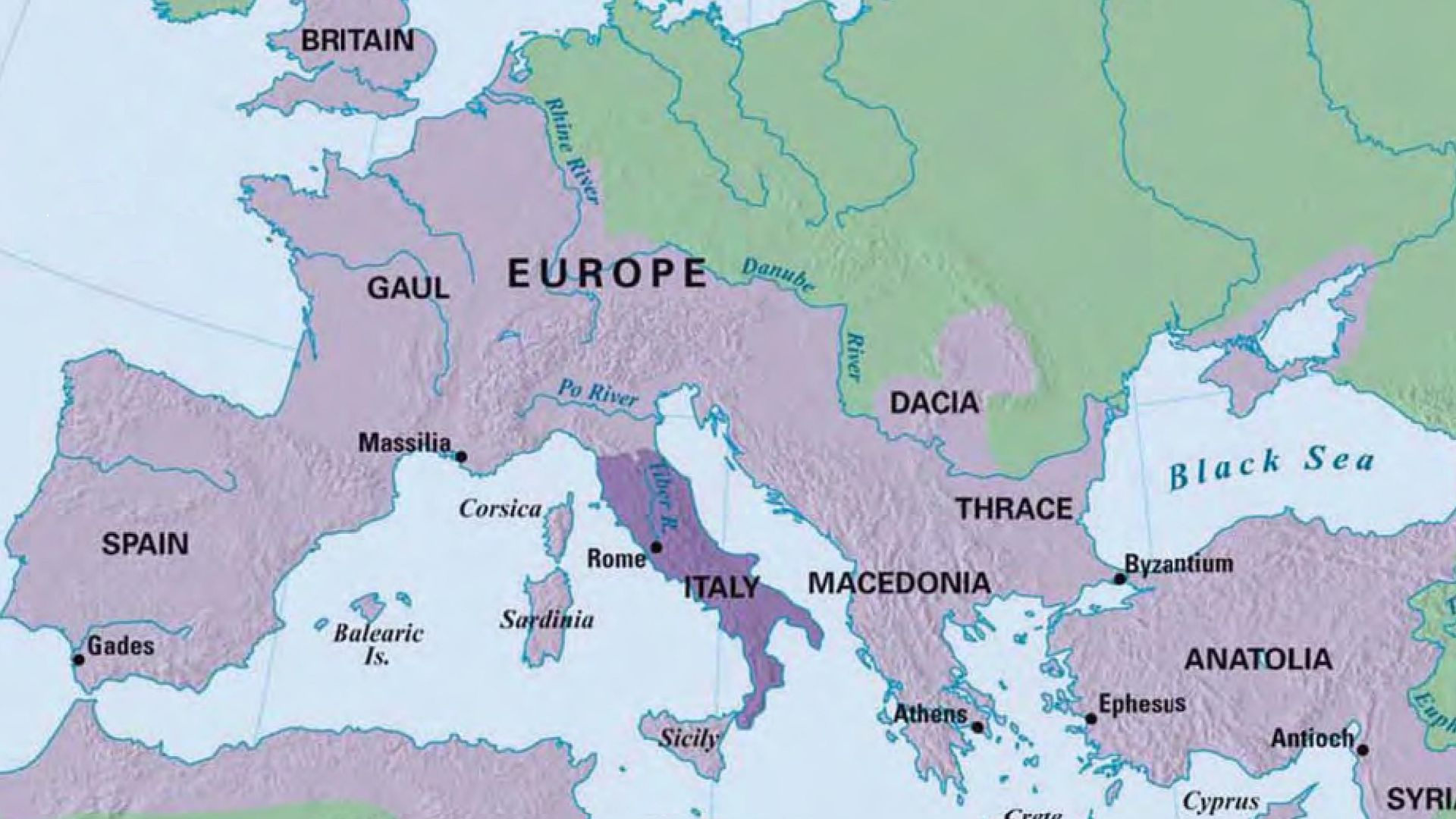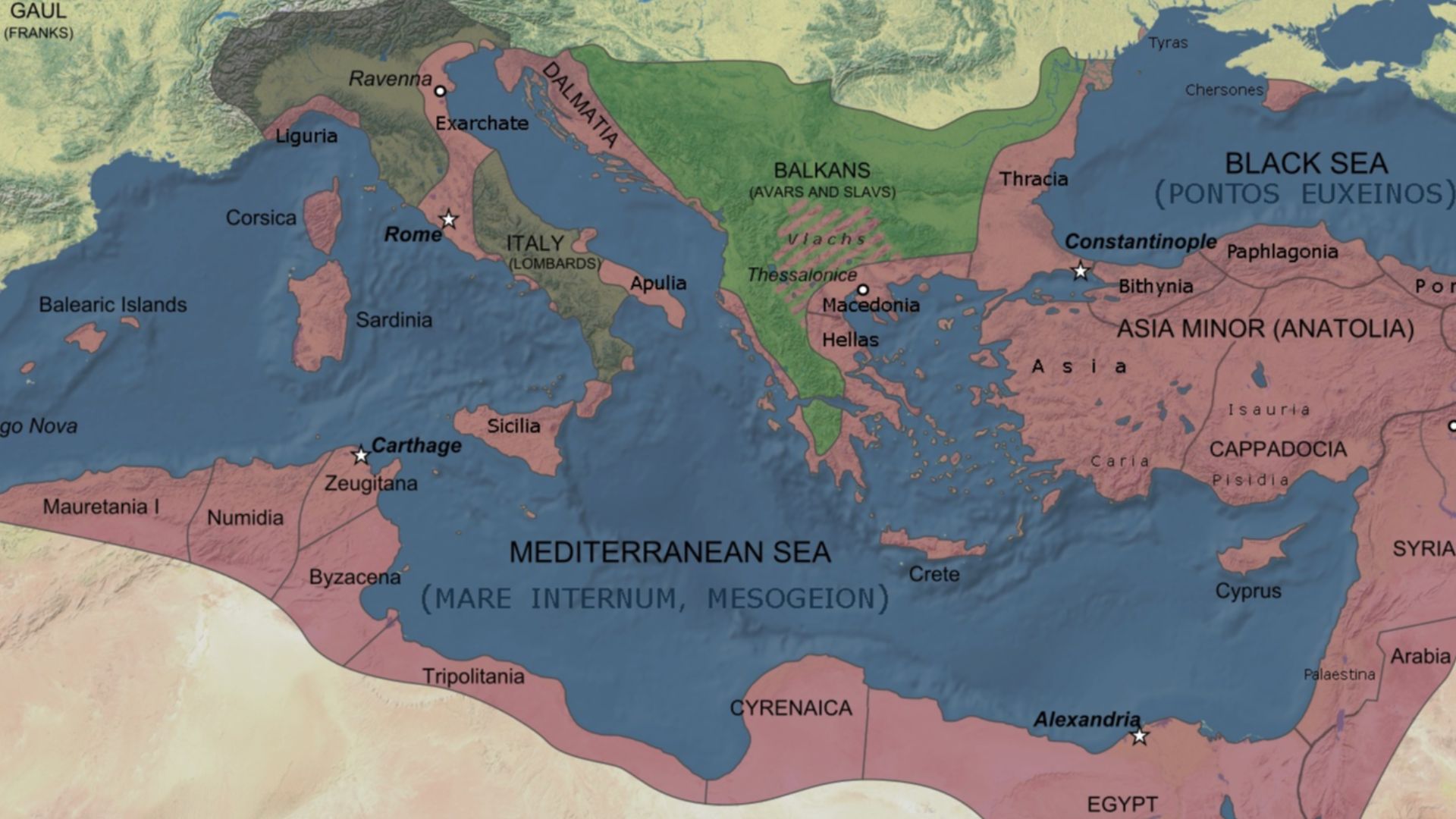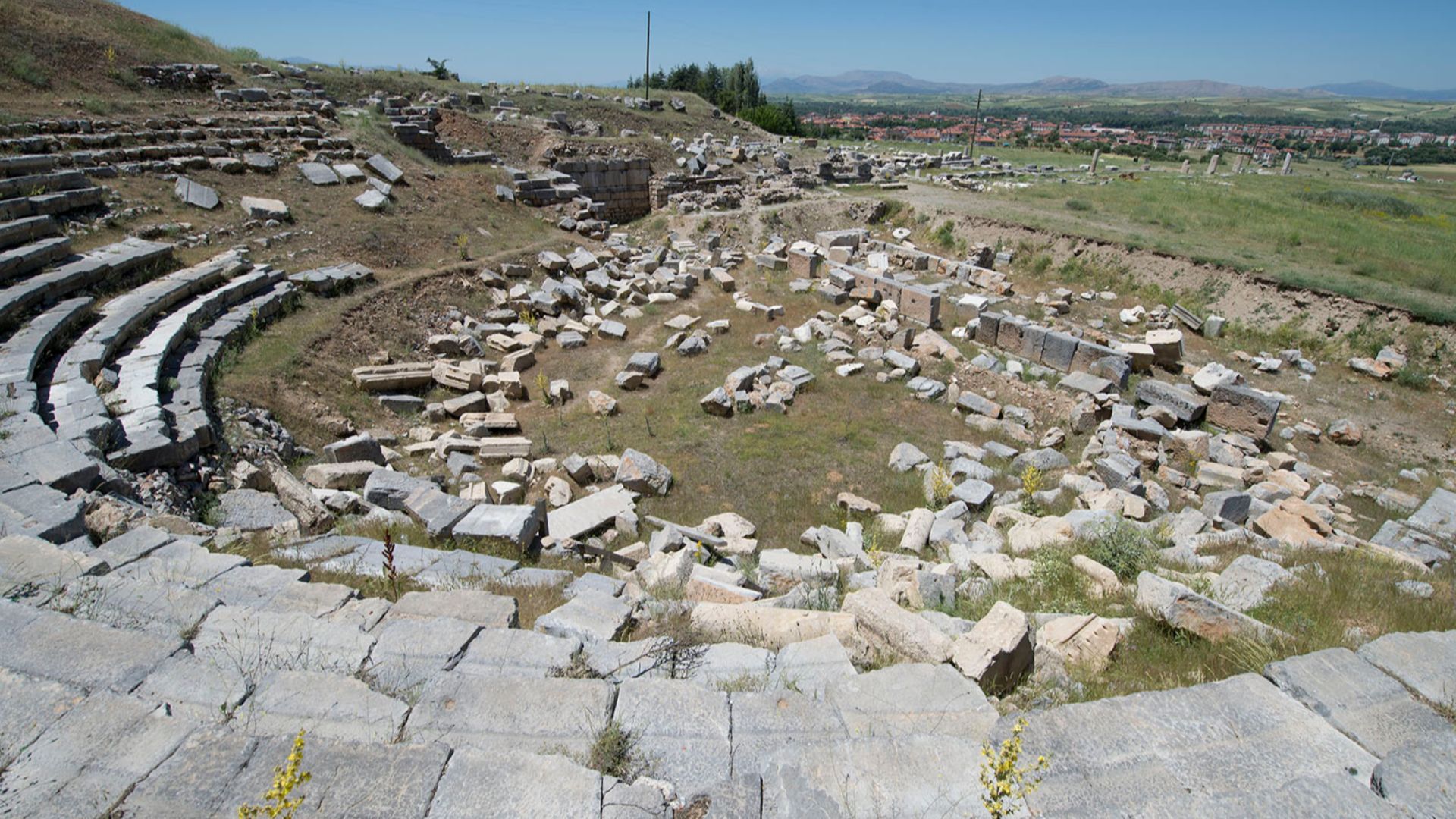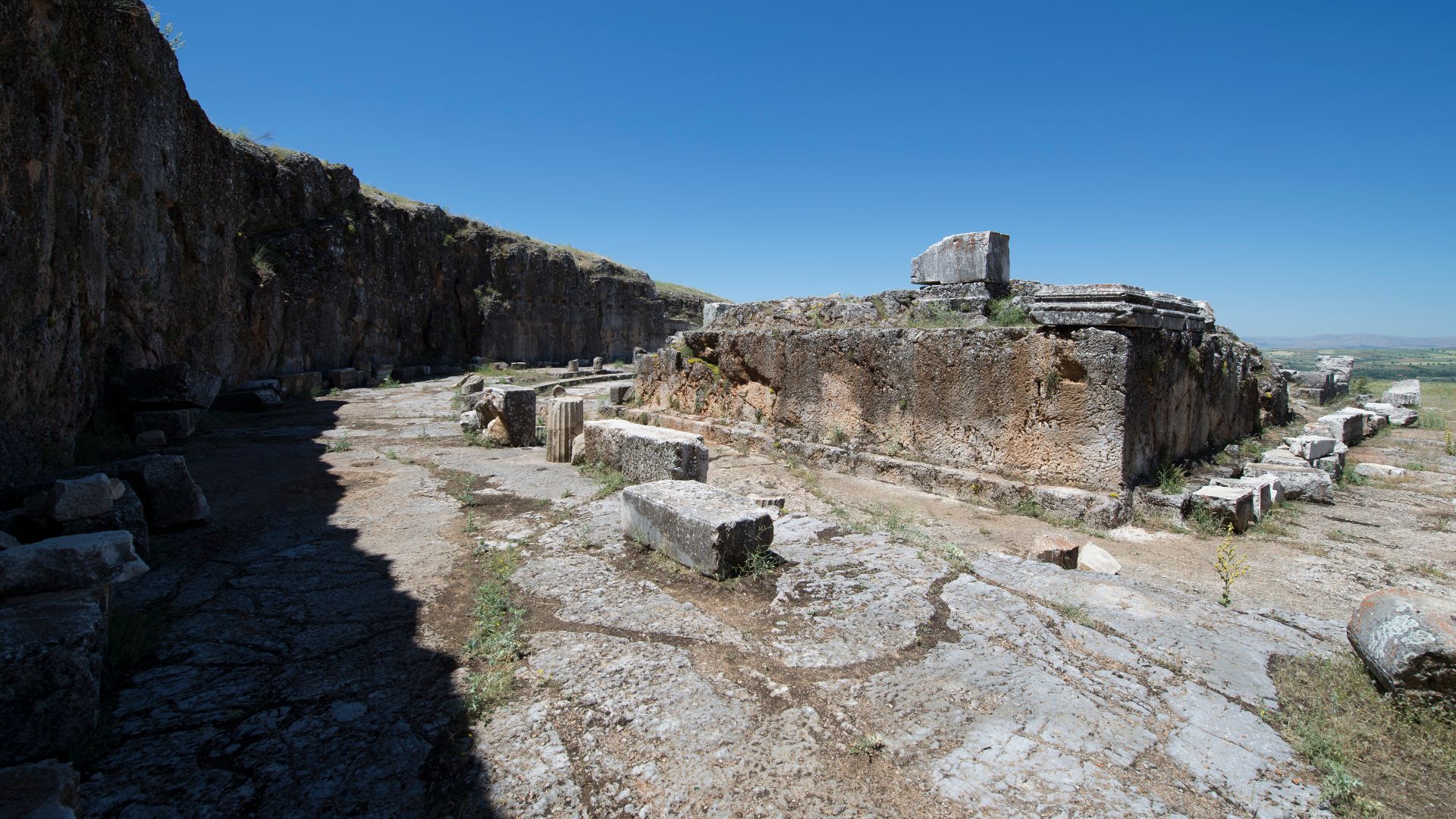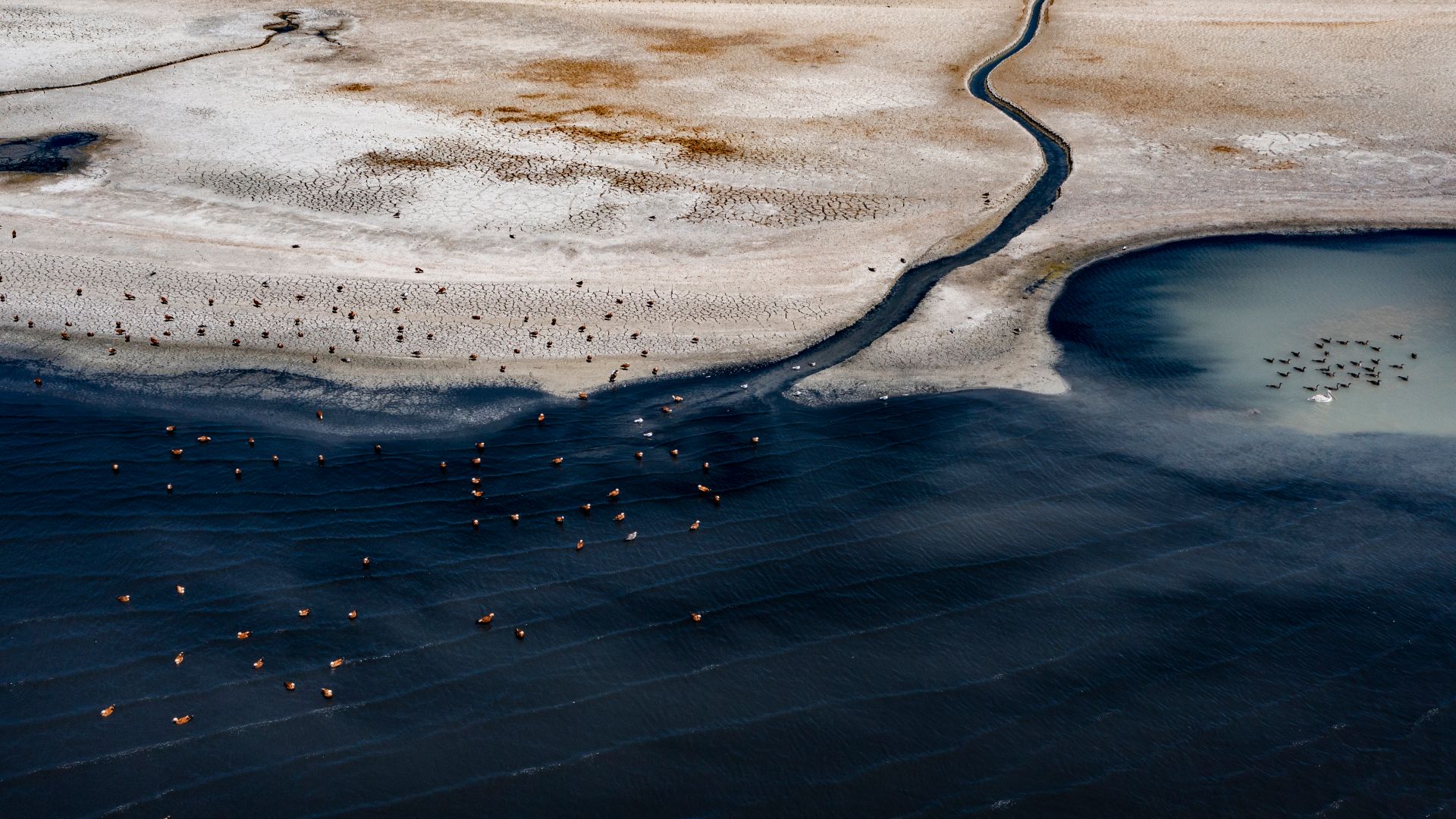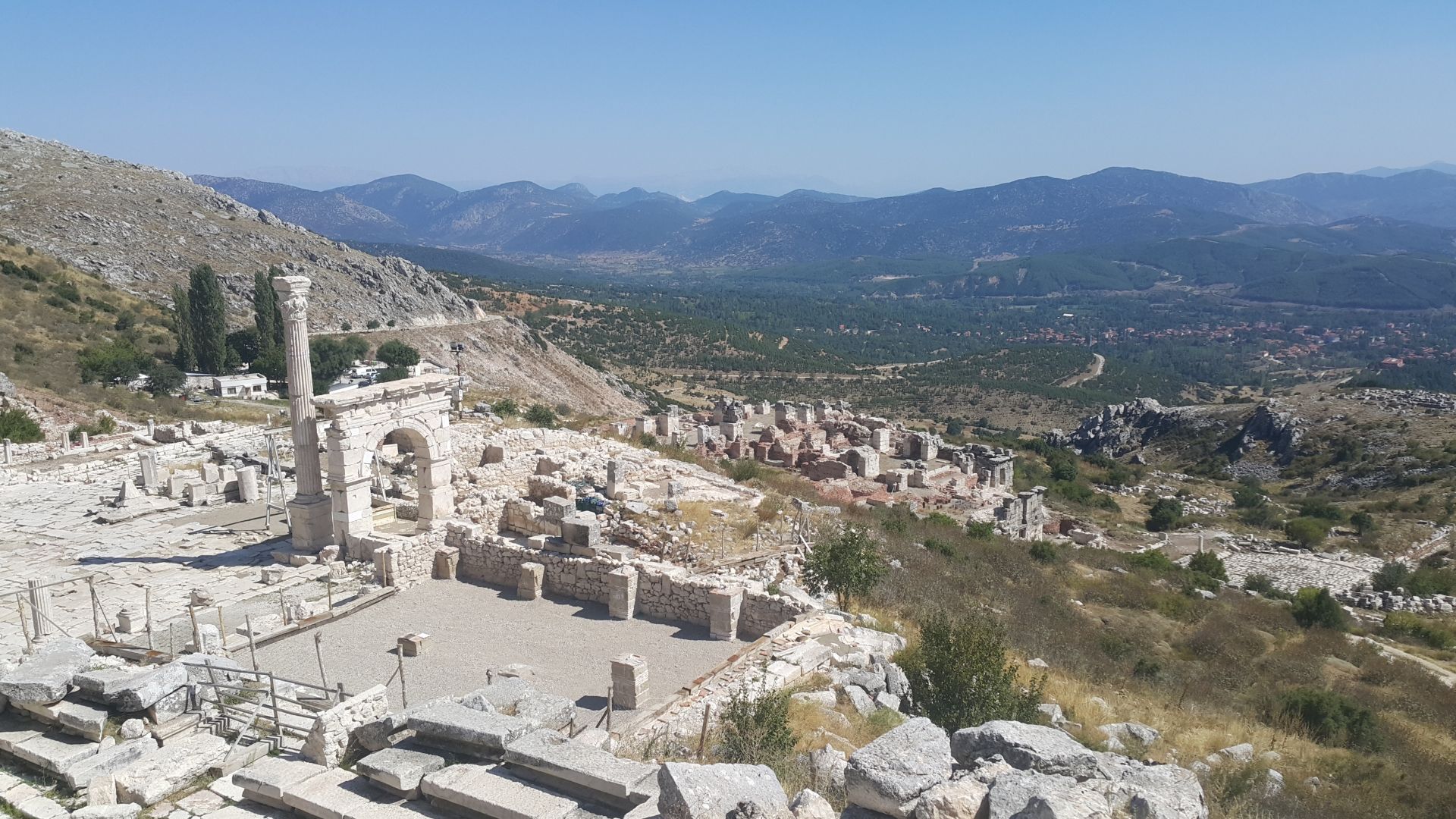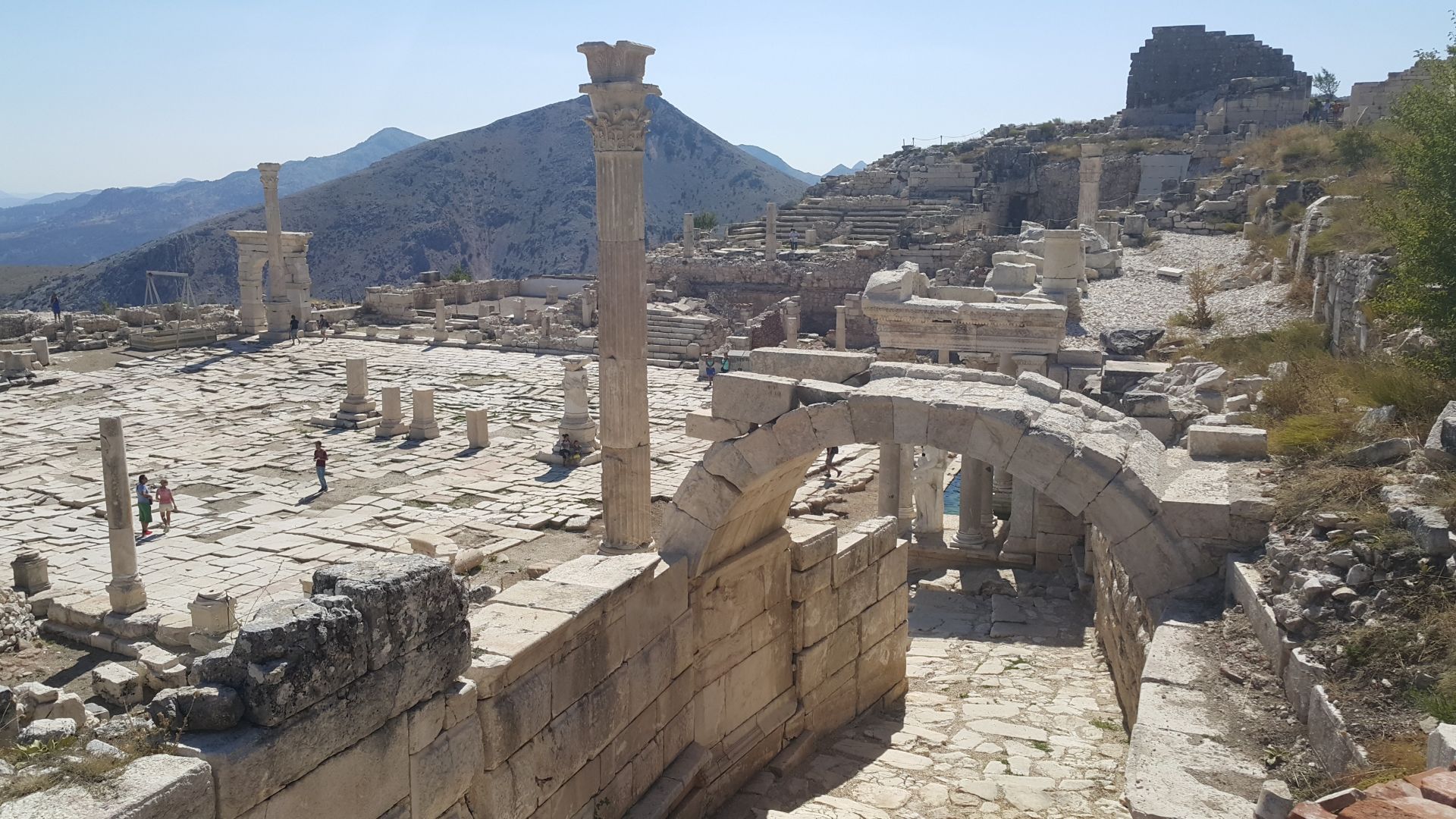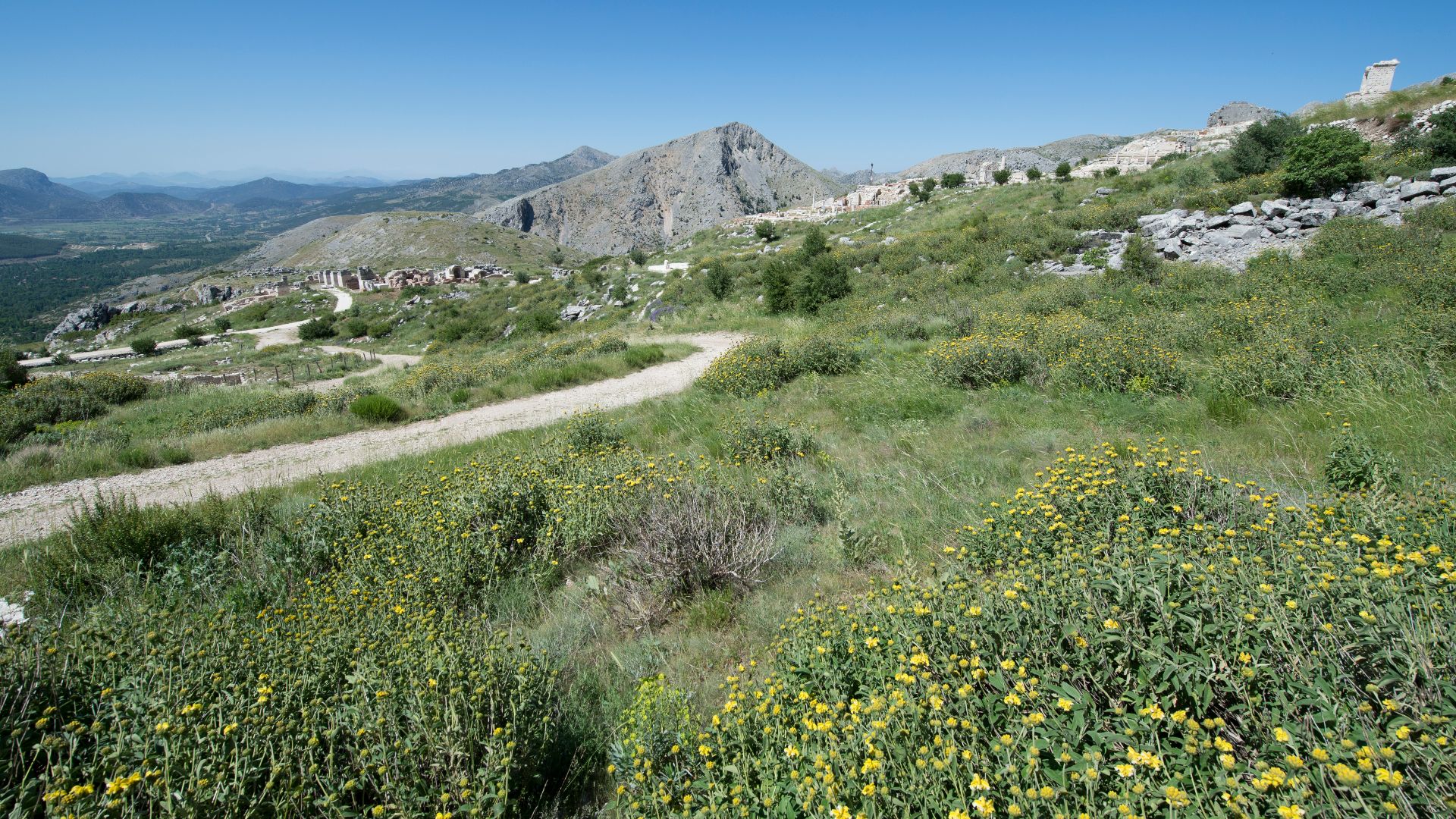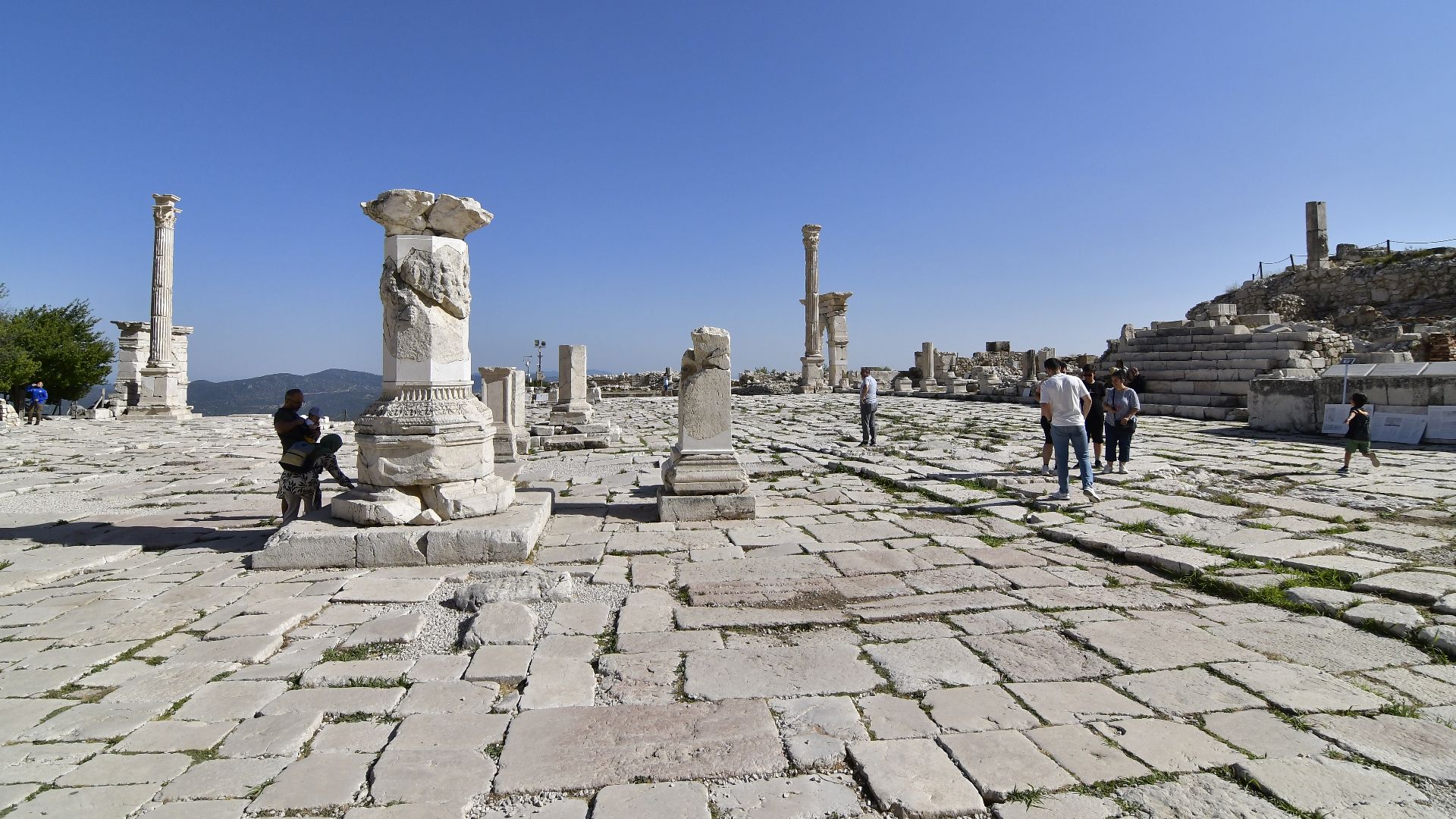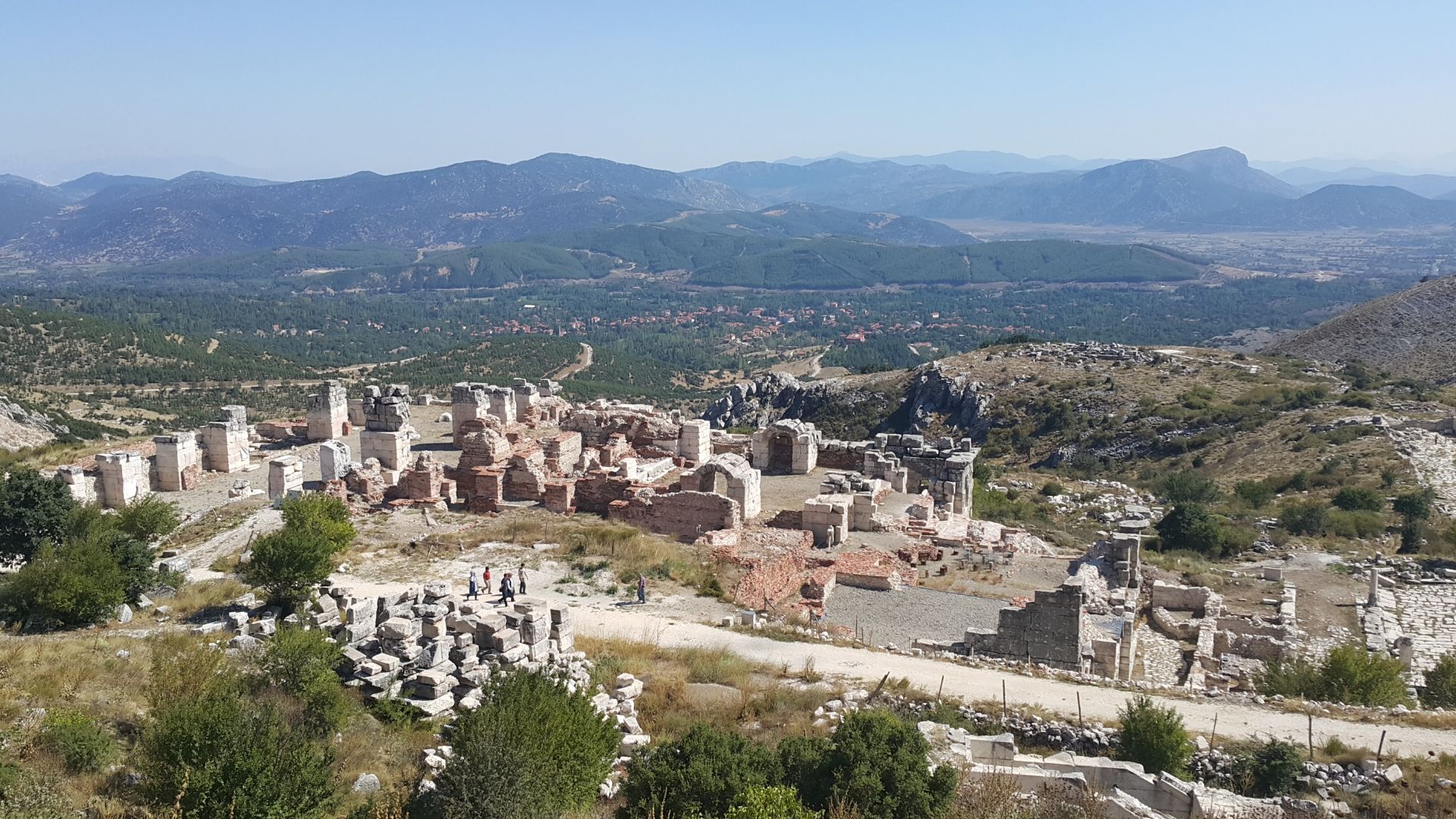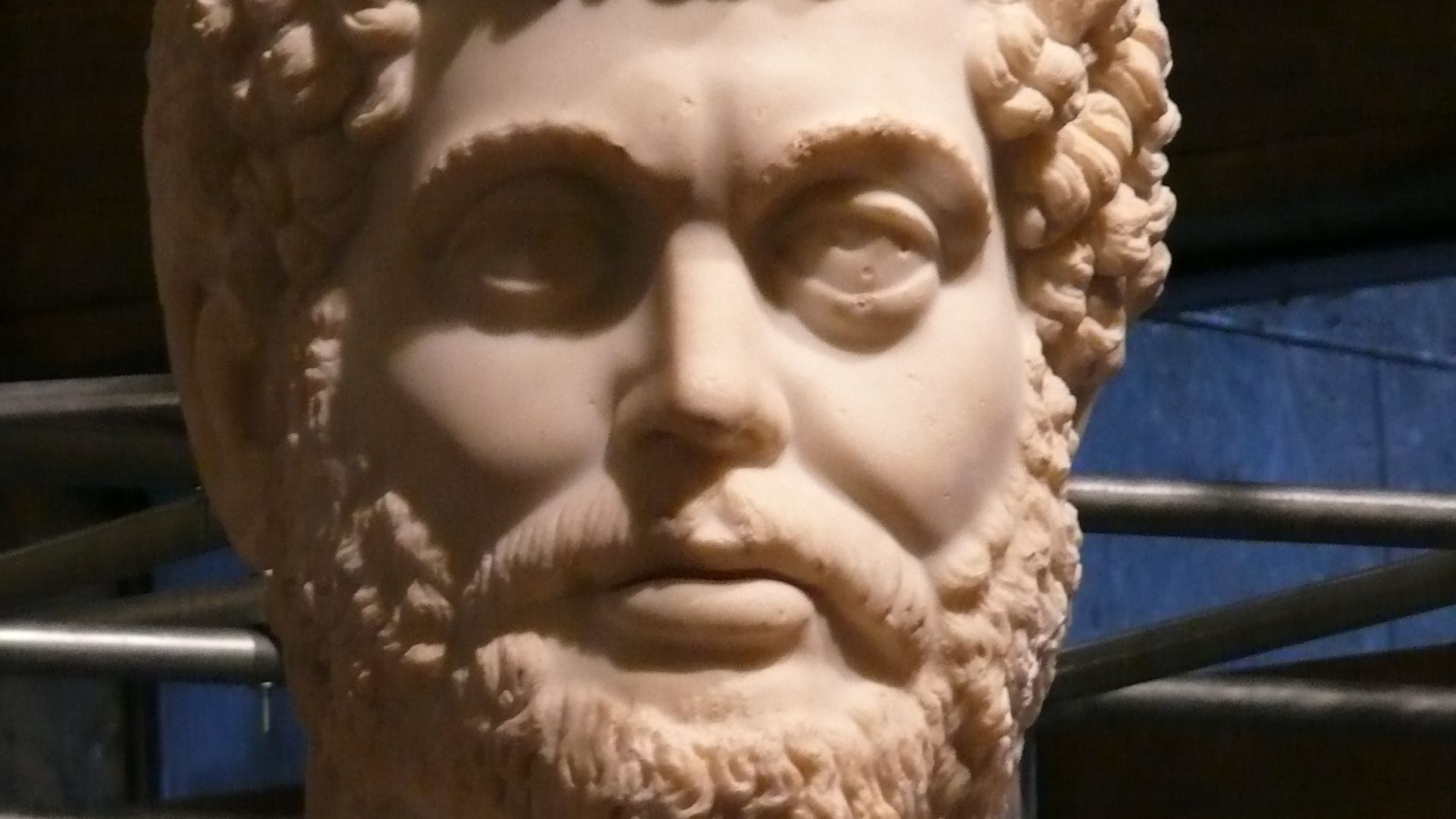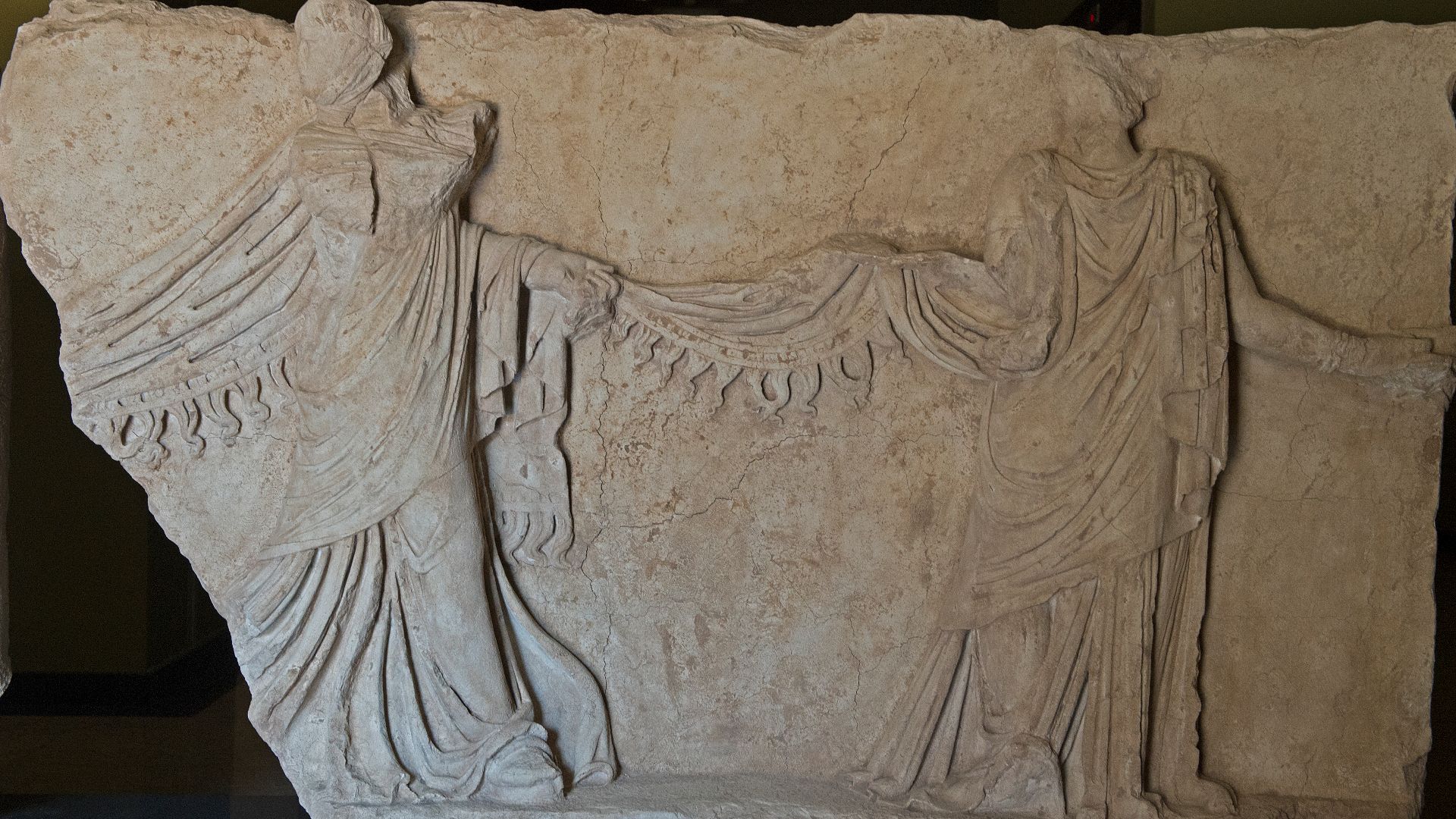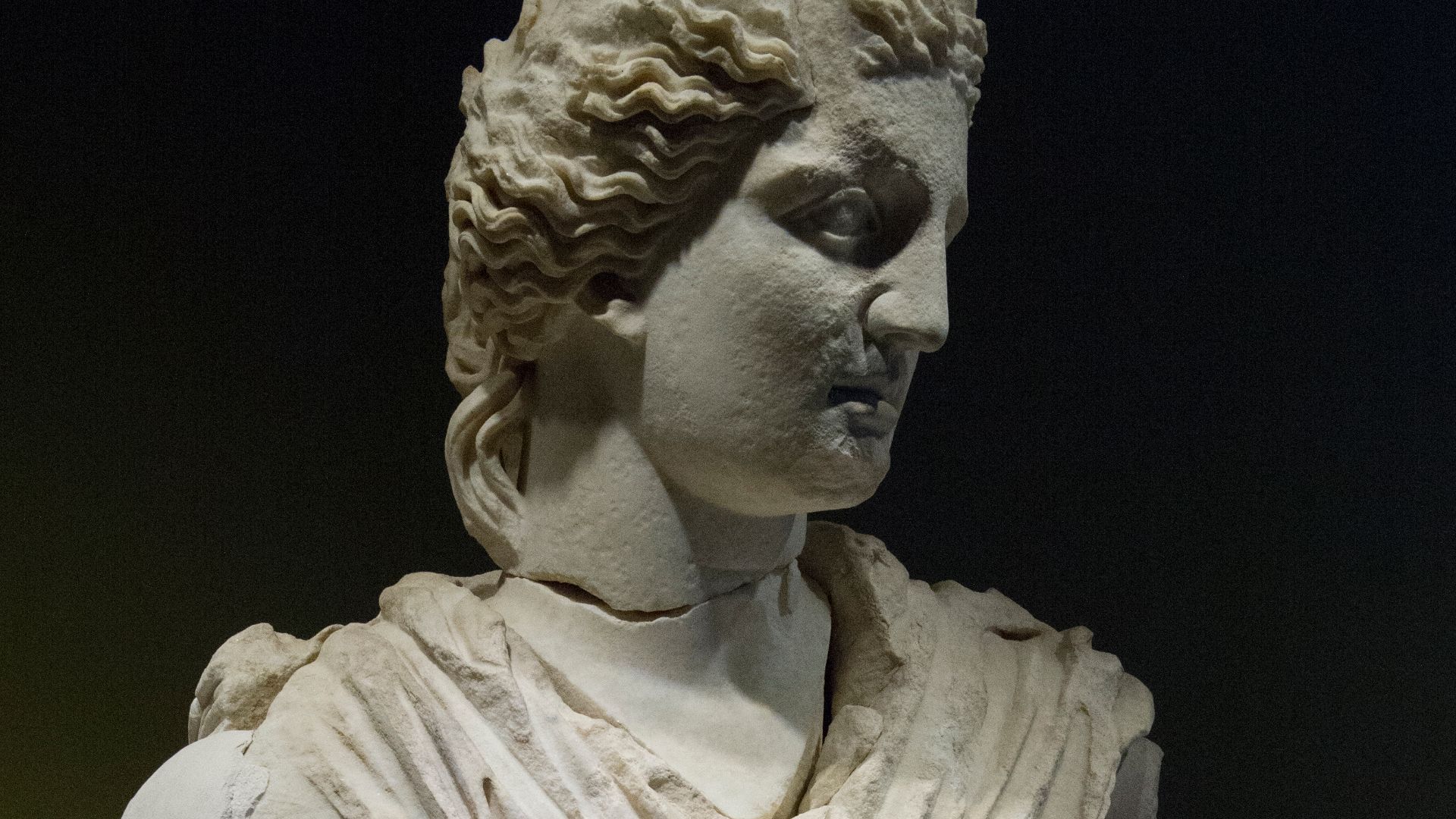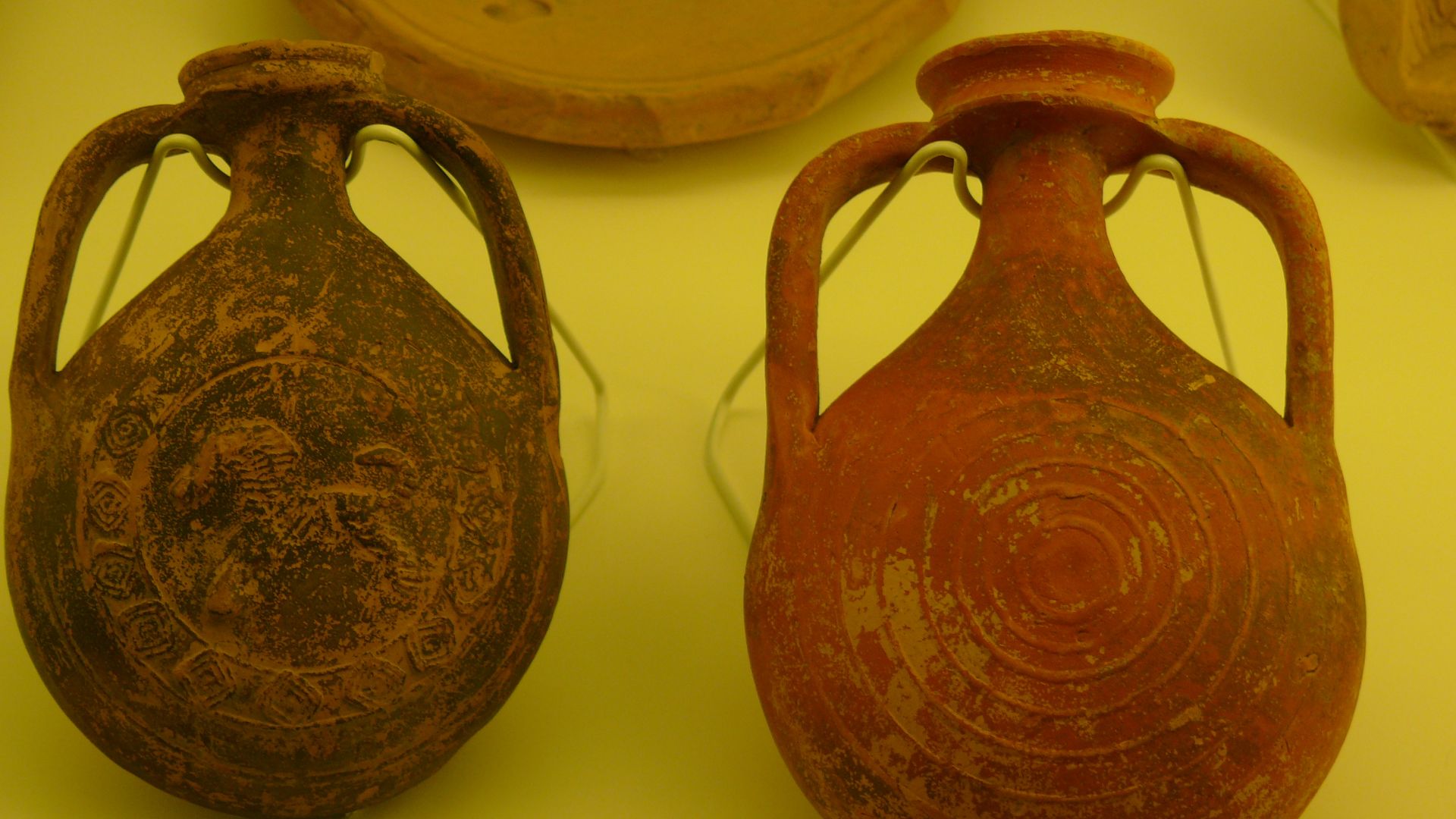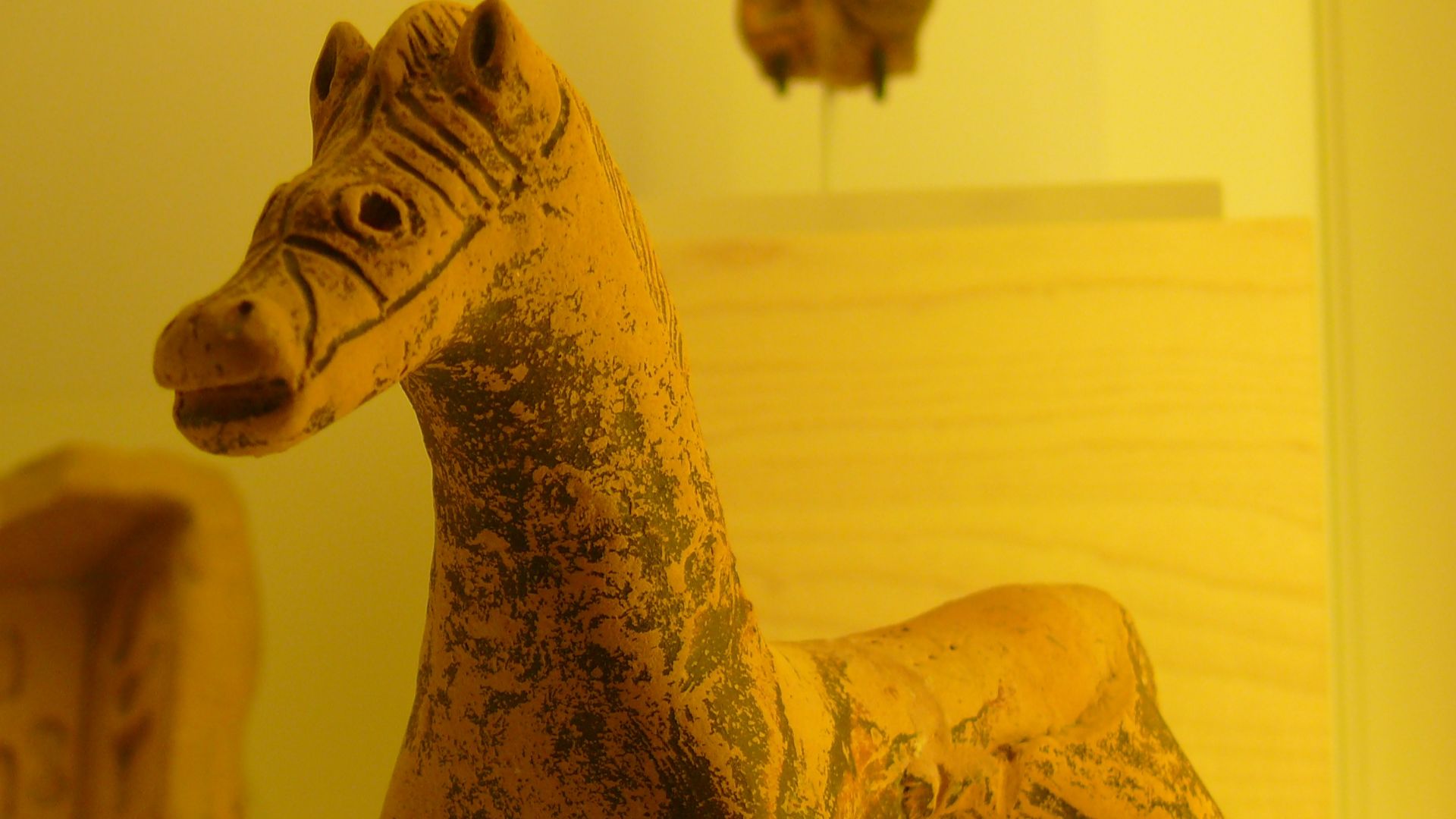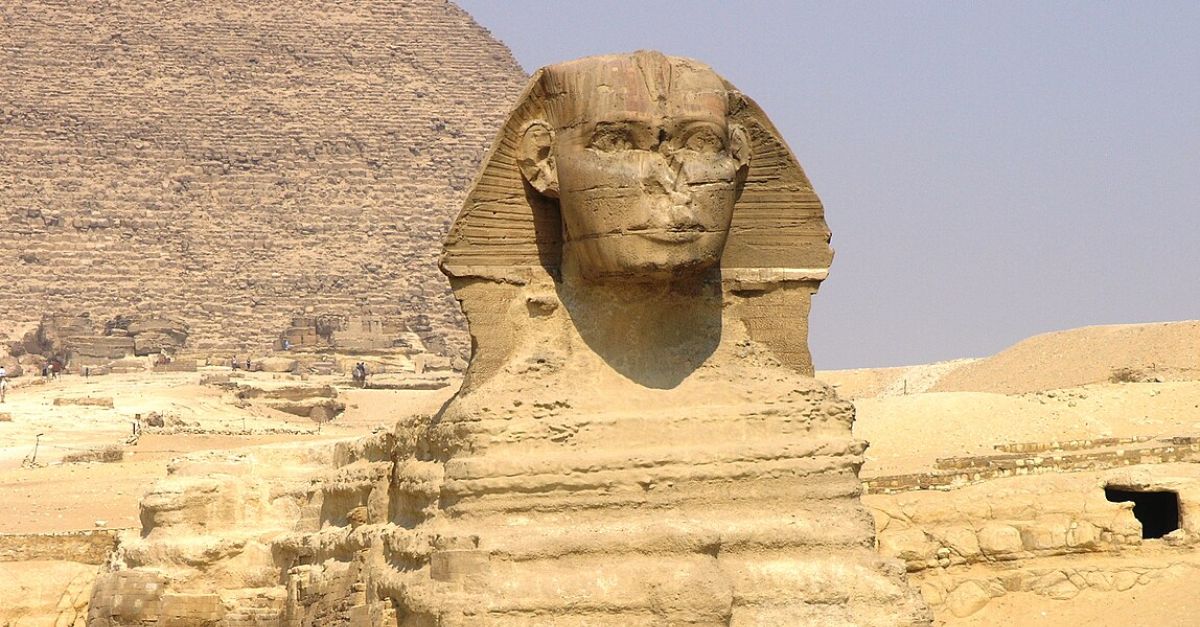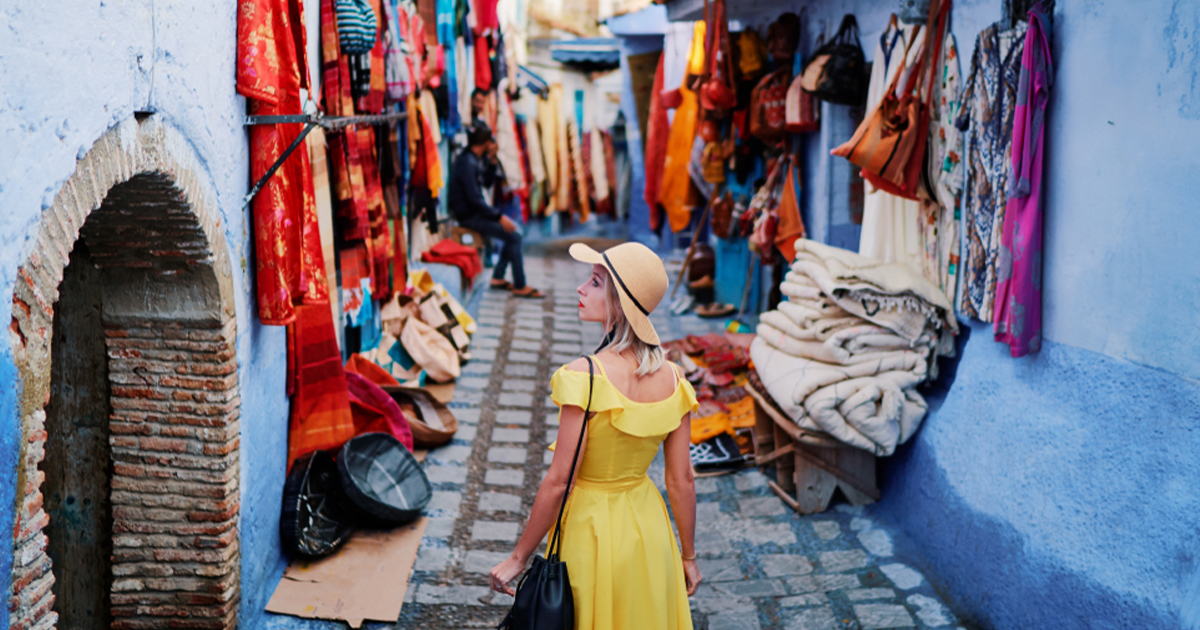Roamin’ Romans
Back in its day, the Roman Empire was the be-all and end-all of civilization. Various rulers expanded the Empire far across Europe and the Middle East. Sagalassos, located in southwestern Turkey, is one of the more interesting parts of the ancient Empire.
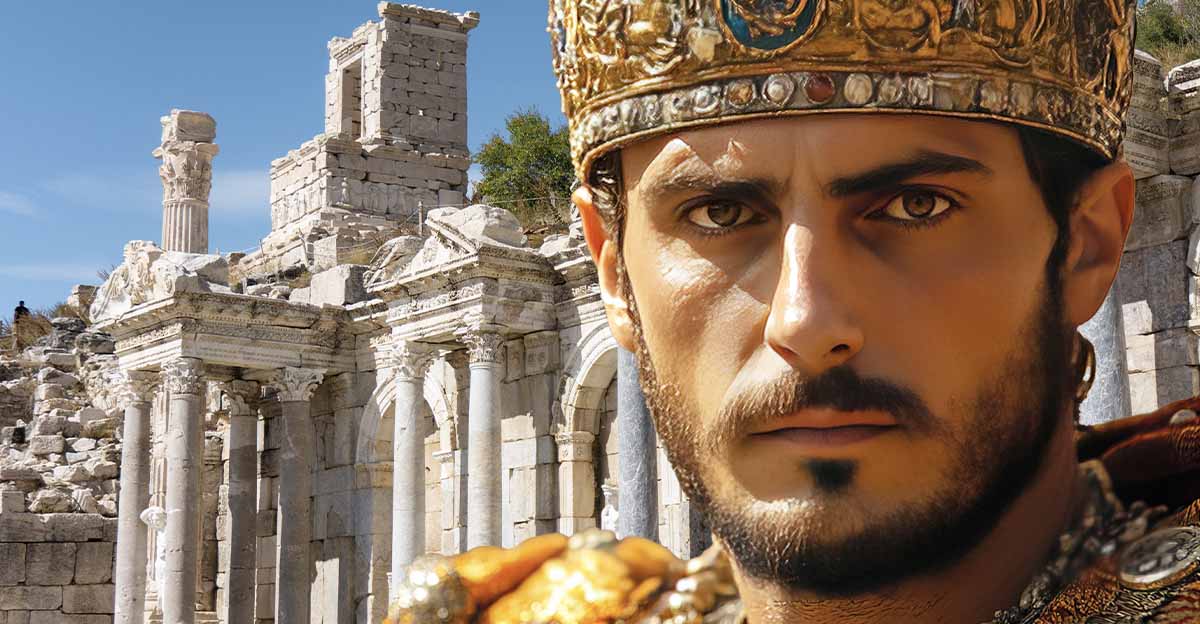
Deep In Turkey
The site of Sagalassos is about 100 km (62 miles) from Antalya, a popular destination for Mediterranean tourism. Also close by are the cities of Burdur and Isparta. The ruins sit at an altitude of between 1,450 and 1,700 meters (about 4,593 to 5,577 feet) in the Taurus Mountains.
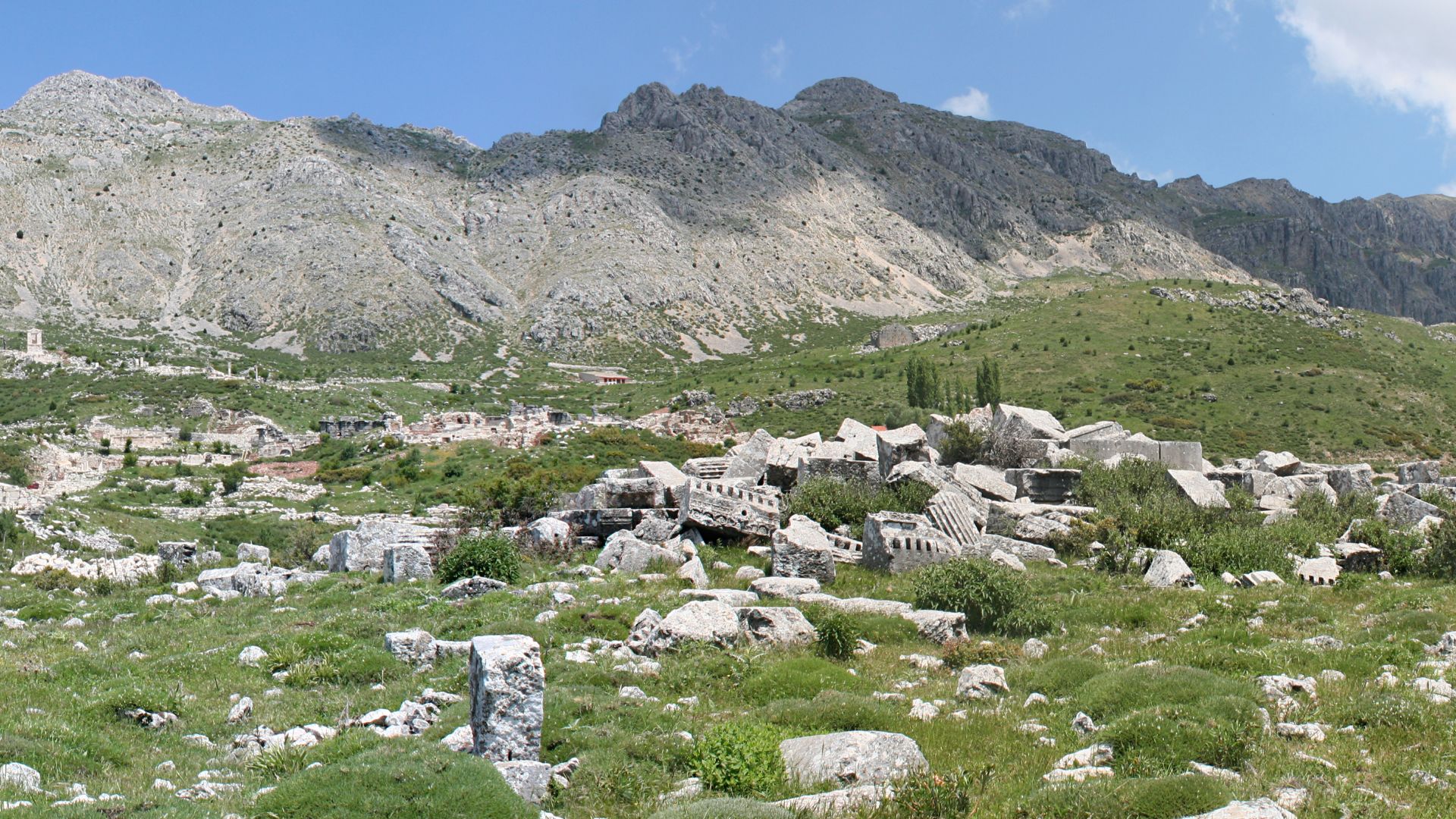 Ingo Mehling, Wikimedia Commons
Ingo Mehling, Wikimedia Commons
A World Power
For hundreds of years, the Roman Empire dominated the Mediterranean and a fair bit of Europe. At its height, the Empire stretched North to England and South to Sudan. Rome ruled a military and economic powerhouse.
An Empire United
From 27 BCE to 395 CE, the Roman Empire was a unified juggernaut that swept over its enemies. This period included the “Pax Romana”, a time of stability and prosperity for Rome and its territories.
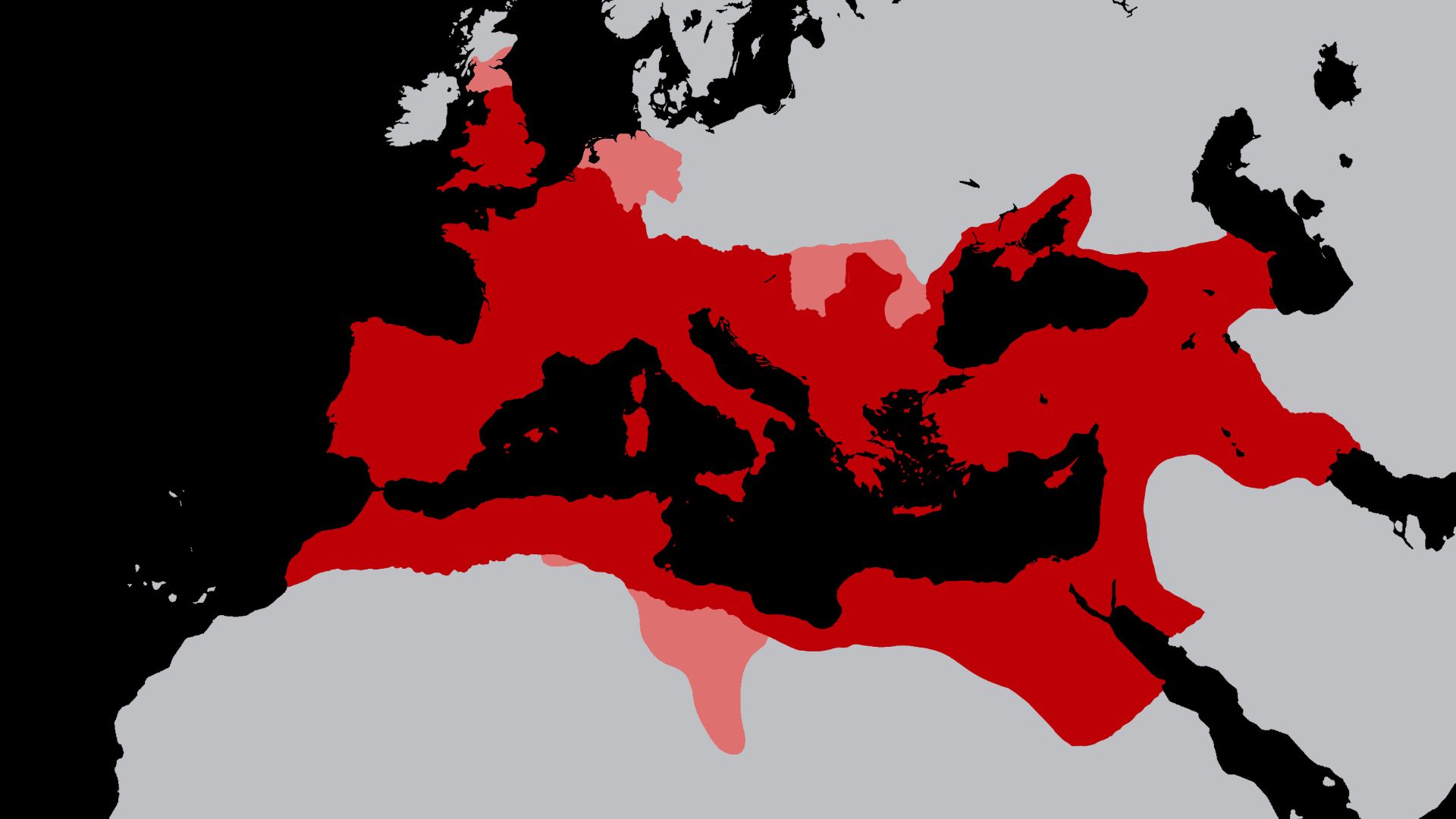 Kaiser&Augstus&Imperator, Wikimedia Commons
Kaiser&Augstus&Imperator, Wikimedia Commons
An Empire Divided
Civil wars divided the Empire into the Eastern and Western divisions. The Western Roman Empire fell prey to Attila the Hun and various other barbarian tribes, and finally collapsed completely in 476 CE.
 Julio Strozza, Wikimedia Commons
Julio Strozza, Wikimedia Commons
Ruination
Although the Eastern Roman Empire’s power endured for another thousand years, all things must end. Historians place the fall of the Eastern Roman Empire at 1453 CE. And already by that time, many of the oldest towns had fallen into ruin.
Sagalassos, Turkey
In 1985 CE, the first major survey of the ruins of Sagalassos took place. Since 1990, the site has become an important archaeological excavation. The discovery of incredible statuary and other artifacts has helped uncover the history of this ancient city.
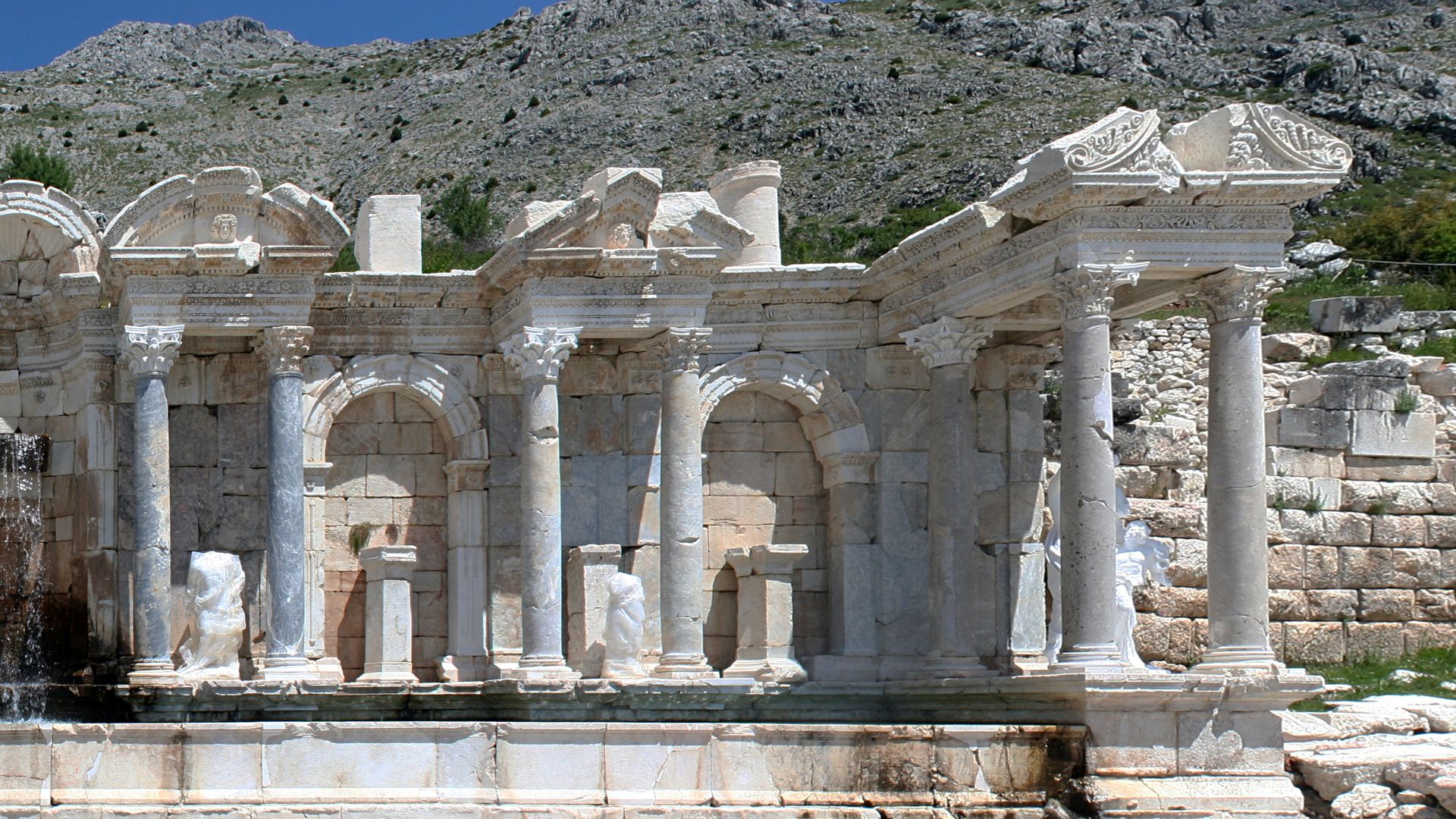 Ingo Mehling, Wikimedia Commons
Ingo Mehling, Wikimedia Commons
In The Taurus Mountains…
The modern-day Turkish Lakes Region was once known as Pisidia. After being conquered by the Romans, the local population took on much of the Roman culture. People in the region had been adaptable for a very long time.
“Before Present”
Humans have inhabited the Pisidia region for 12,000 years BP. That’s “Before Present”, a designation used in sciences that deal with ancient history. The technical date of “Present” is January 1, 1950.
The First Farms
The first farms in the archaeological record appear around 8,000 BCE. Farmers settled along the shores of Lake Burdur. But it would be a long, long time before the site of Sagalassos welcomed human occupants.
6,000 Or So Years Later
The first documented mention of the site of Sagalassos appears in the 14th century BCE. Over the next thousand or so years, the site took shape as one of the major urban centers in the region.
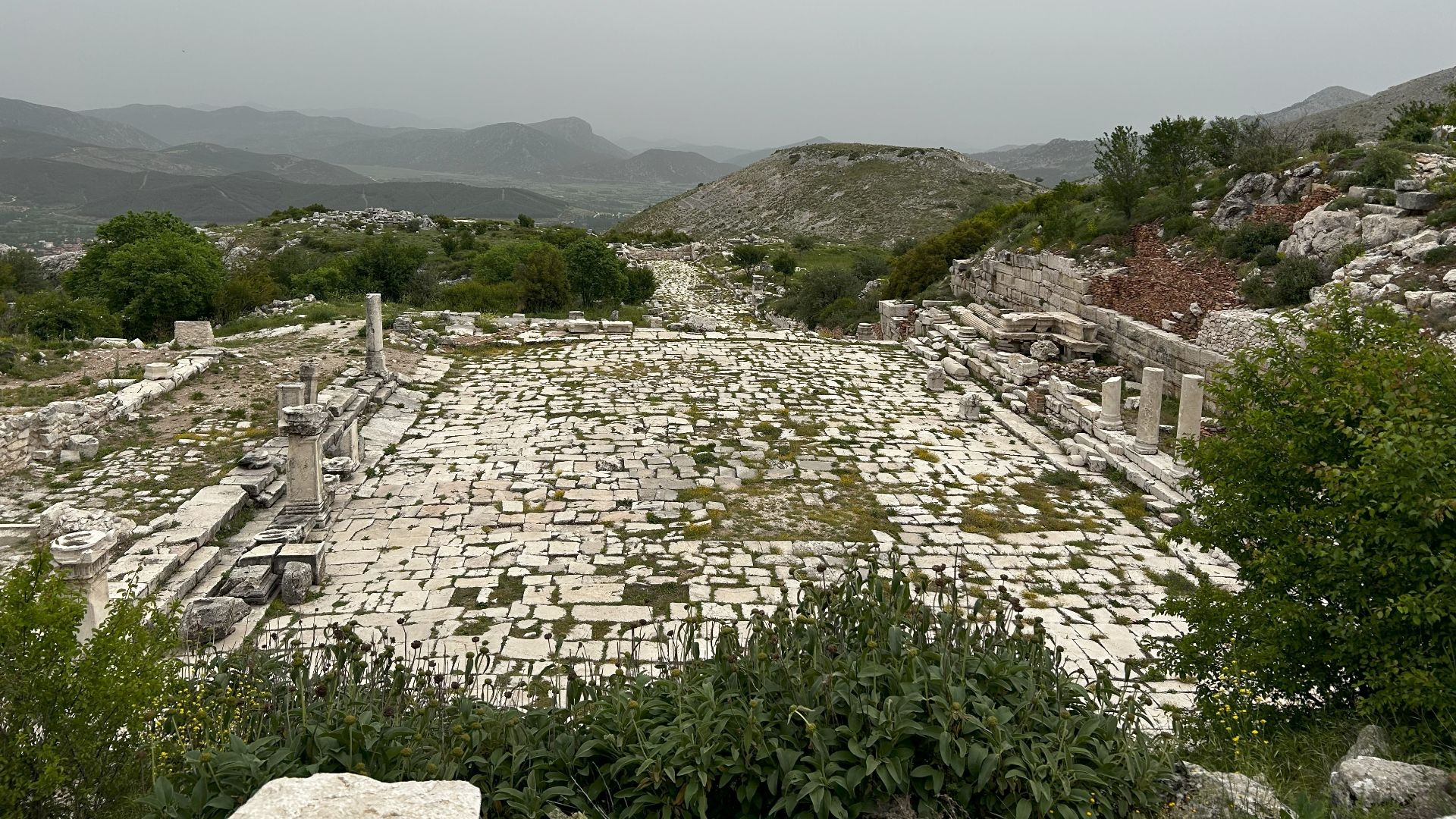 KaramurverOzu, Wikimedia Commons
KaramurverOzu, Wikimedia Commons
In The Year 333
As Alexander the Great rampaged across Asia, he conquered the city of Sagalassos in 333 BCE. The Pisidian population largely adopted Greek culture and was one of the wealthiest cities in that part of the world.
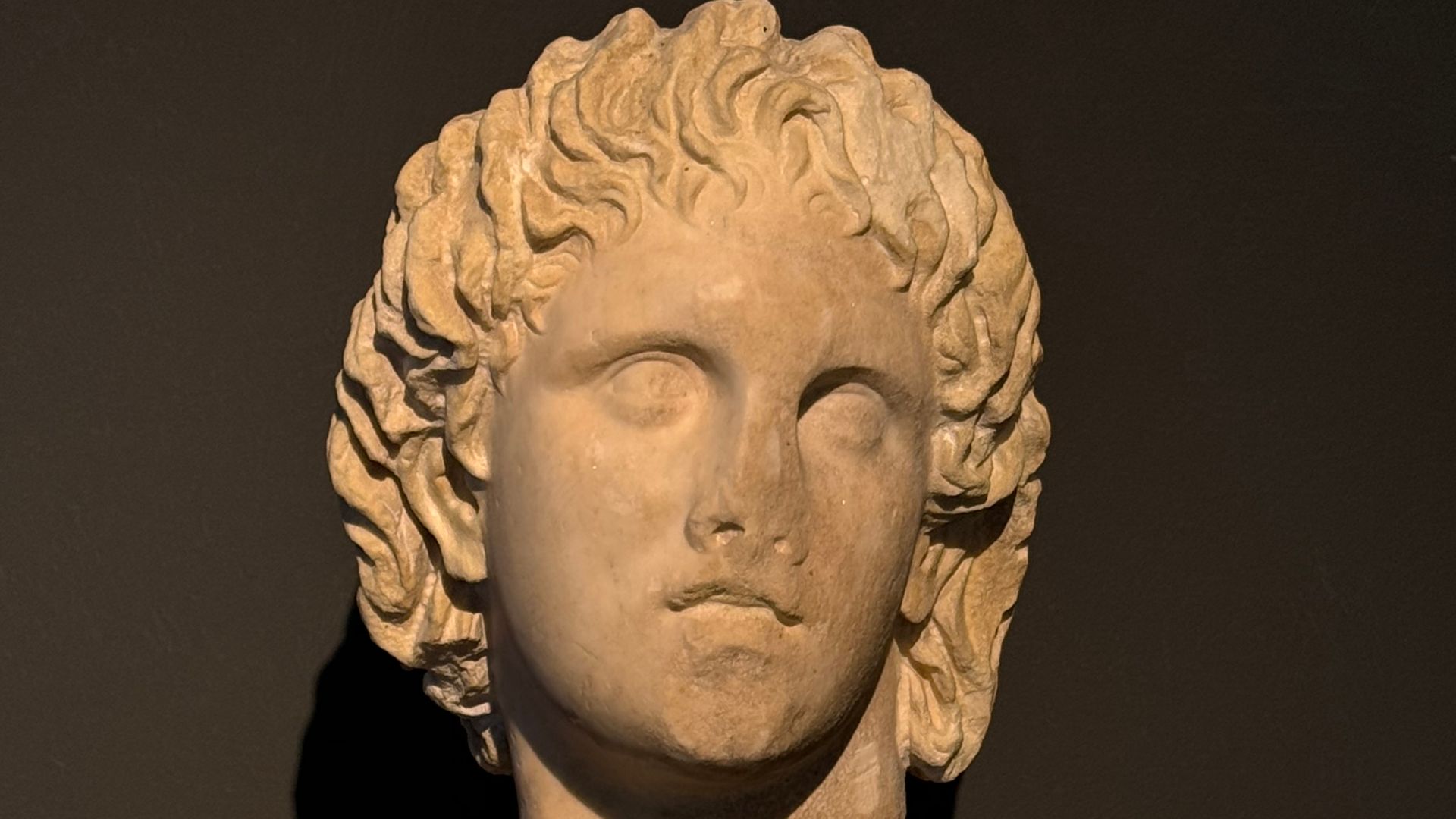 Digitalphilologist, Wikimedia Commons
Digitalphilologist, Wikimedia Commons
Along Comes Rome
In 133 BCE, the last King of the Attalids, the Greek kingdom within which Sagalassos rested, bequeathed his kingdom to Rome. He left no heirs, and this final act made Sagalassos a part of the mighty Roman Empire.
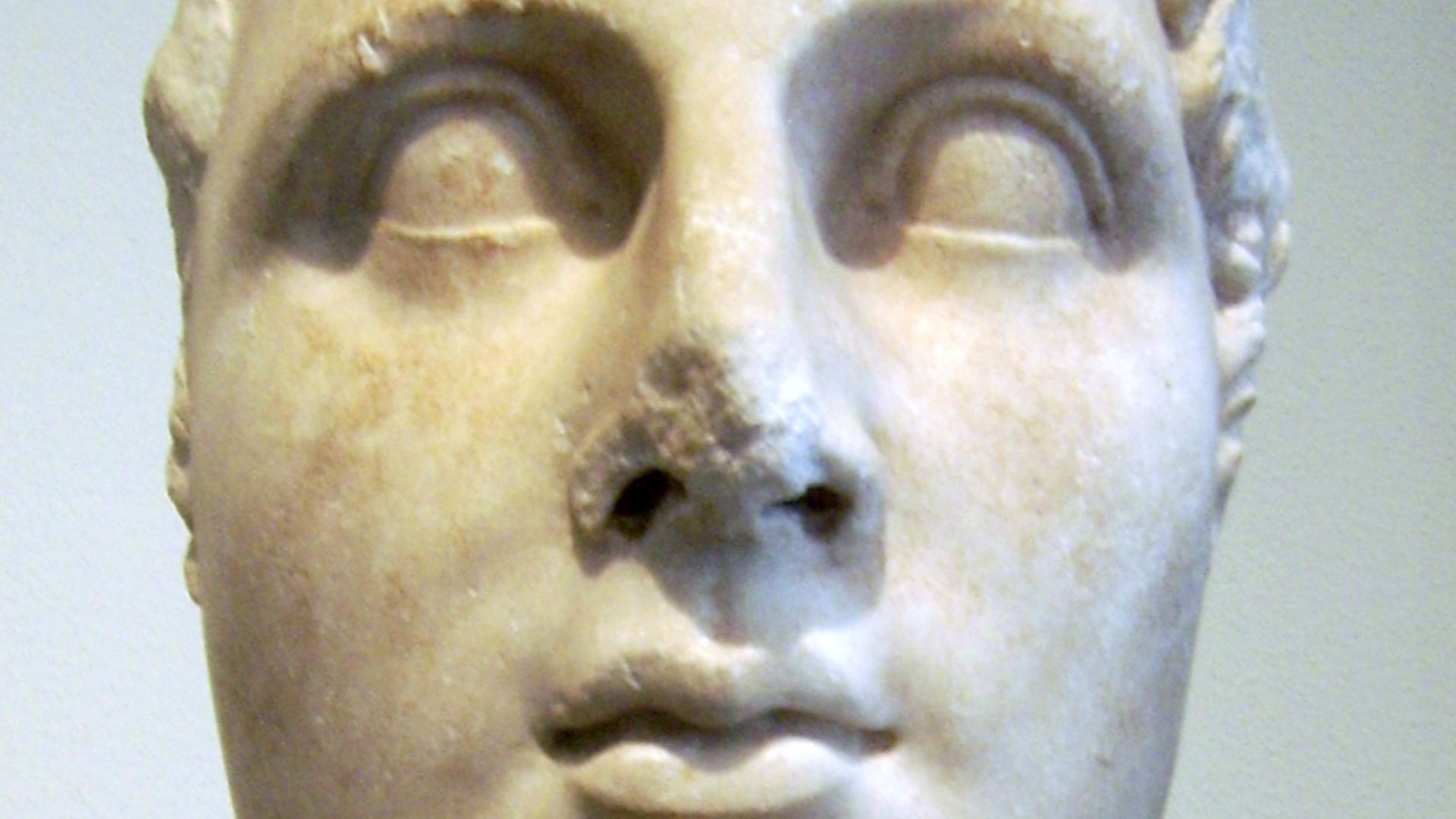 Marcus Cyron, Wikimedia Commons
Marcus Cyron, Wikimedia Commons
A Prosperous Patch
There was a reason that ancient farmers chose this location for their first settlements. The area around Lake Burdur, including Sagalassos, was incredibly fertile. The region produced more grain and olives than it could use.
 Justinianus, Wikimedia Commons
Justinianus, Wikimedia Commons
The City Gets Richer
From this surplus came prosperity. Despite being somewhat distant from other parts of the Empire, Sagalassos became a center for trade and commerce. Such prosperity is one of the reasons the Emperor Hadrian named it the center of the imperial cult, the state religion.
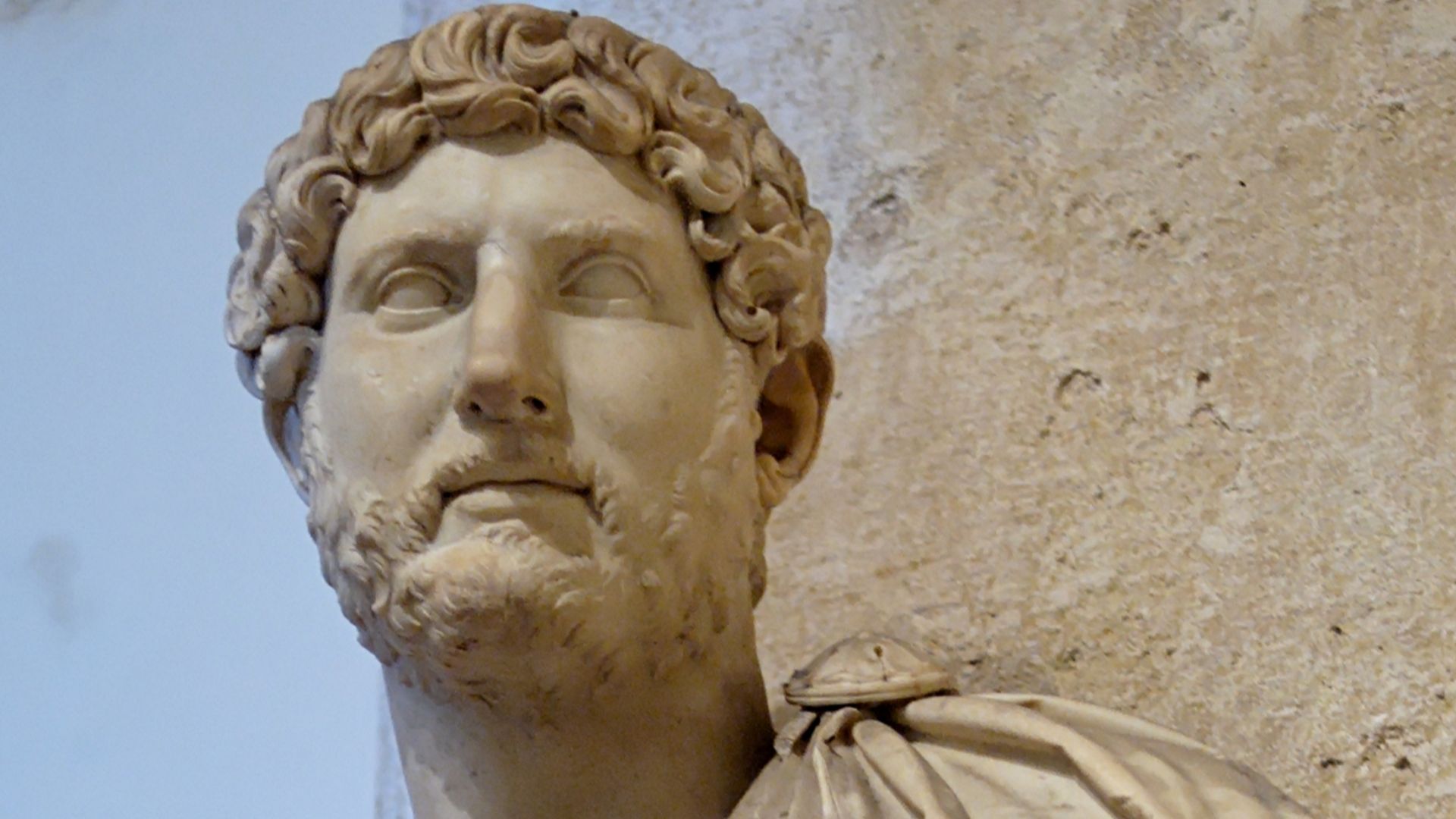 Marie-Lan Nguyen, Wikimedia Commons
Marie-Lan Nguyen, Wikimedia Commons
Doing Very Well
Food and clay exports brought great wealth to the city, and Sagalassos grew into a proper metropolis. Nearby clay beds provided the raw materials for much-desired tableware, known as “Sagalassos red slip ware”.
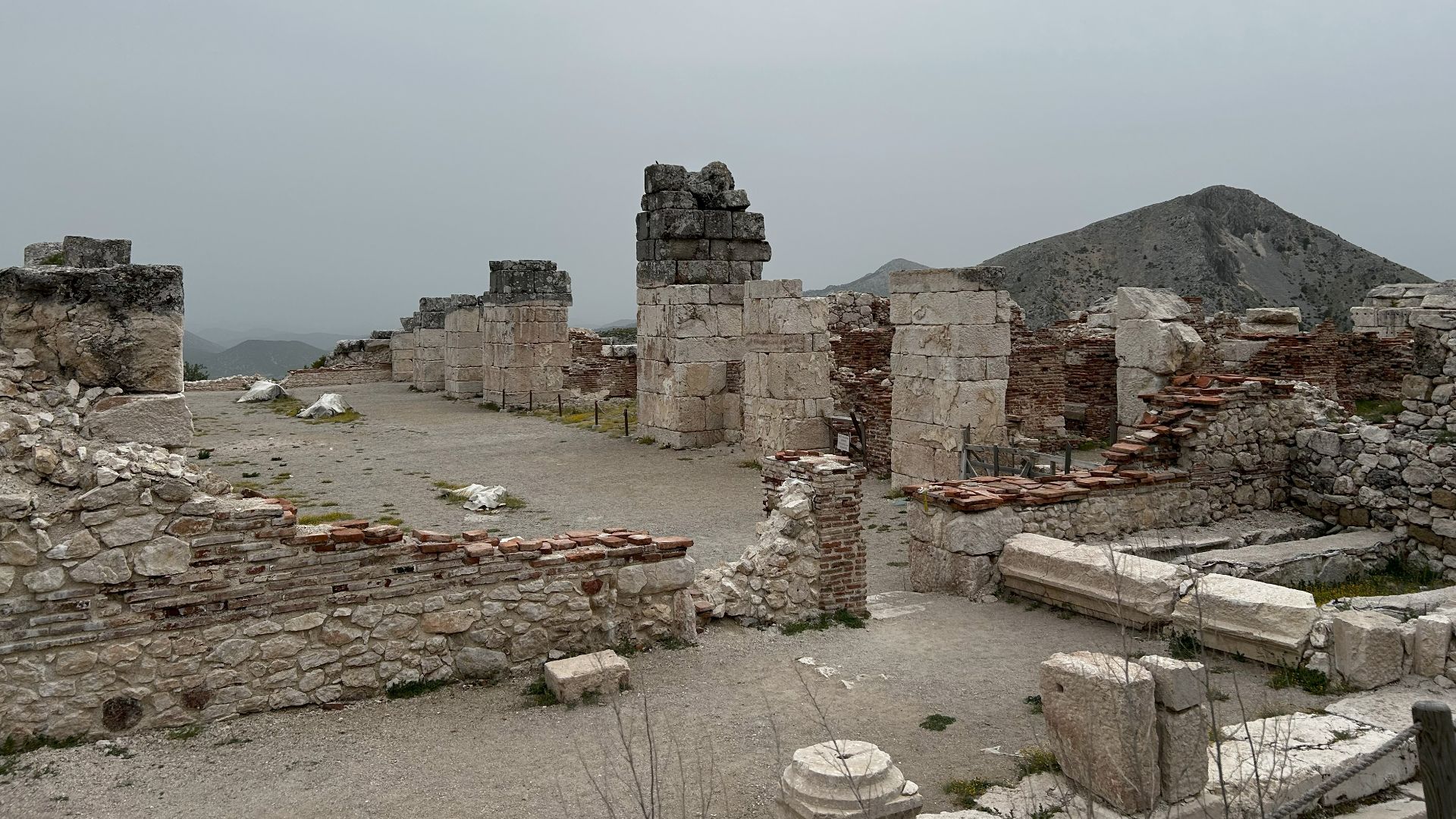 KaramerverOzu, Wikimedia Commons
KaramerverOzu, Wikimedia Commons
A Decent Half-Millennium
Things seemed to be pretty great for Sagalassos and the surrounding Pisidia region for about 500 years. But in 400 CE, the city was fortified against rebellious nearby tribes. Even under a siege of sorts, the city continued to prosper.
Earthquakes And Epidemics
A hundred years later, an earthquake shook the city to its foundations. Many buildings collapsed, but the Sagalassosian citizens rebuilt, and the city continued to be an important part of the Pisidia region.
Plague Town
In the earthquake’s aftermath, Sagalassos was ravaged by the plague. Multiple epidemics in the 6th century cut the local population in half. People started leaving the city and taking up a rural life.
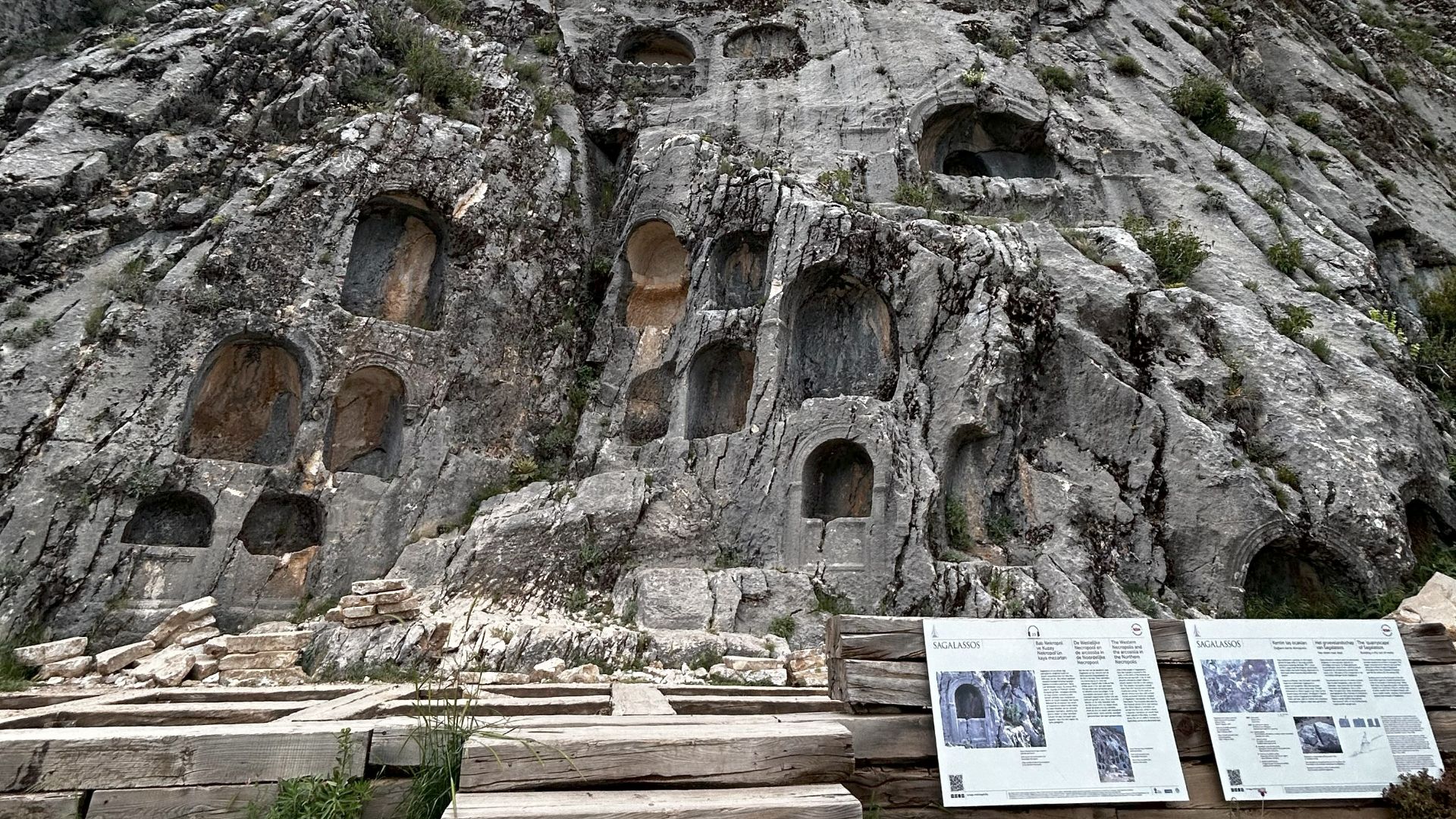 KaramurverOzu, Wikimedia Commons
KaramurverOzu, Wikimedia Commons
Earthquake, Part Two
Around a hundred years after that, another earthquake and ever-increasing raids led to the abandonment of the site—for the most part. Some evidence suggests that small towns and hamlets survived well up to the 13th century CE. But the Sagalassos of old was gone.
Time Happens
With the city proper no longer inhabited, the Earth did what it always does: it grows over the ruins and hides the site from human eyes. Layers of erosion and the plants that grew on top of them covered the remains of the city.
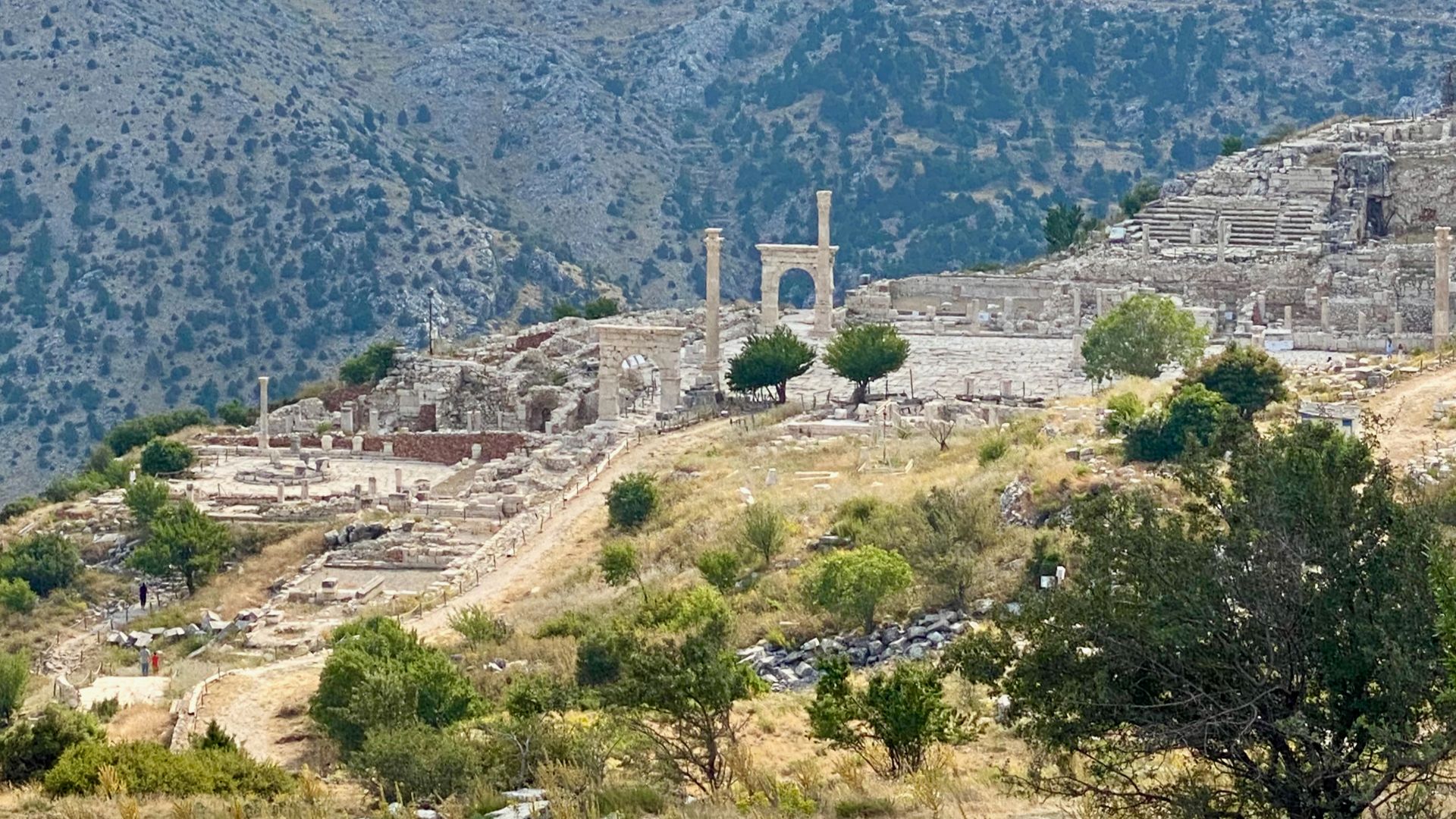 Josep Renalias Lohen11, Wikimedia Commons
Josep Renalias Lohen11, Wikimedia Commons
Perfectly Preserved Past
Although Sagalassos was a prosperous city, it was quite far off the beaten path. Due to the remoteness of its location, it escaped the kind of looting other ancient ruins suffered over the years, making it one of the best-preserved ruins in the Mediterranean.
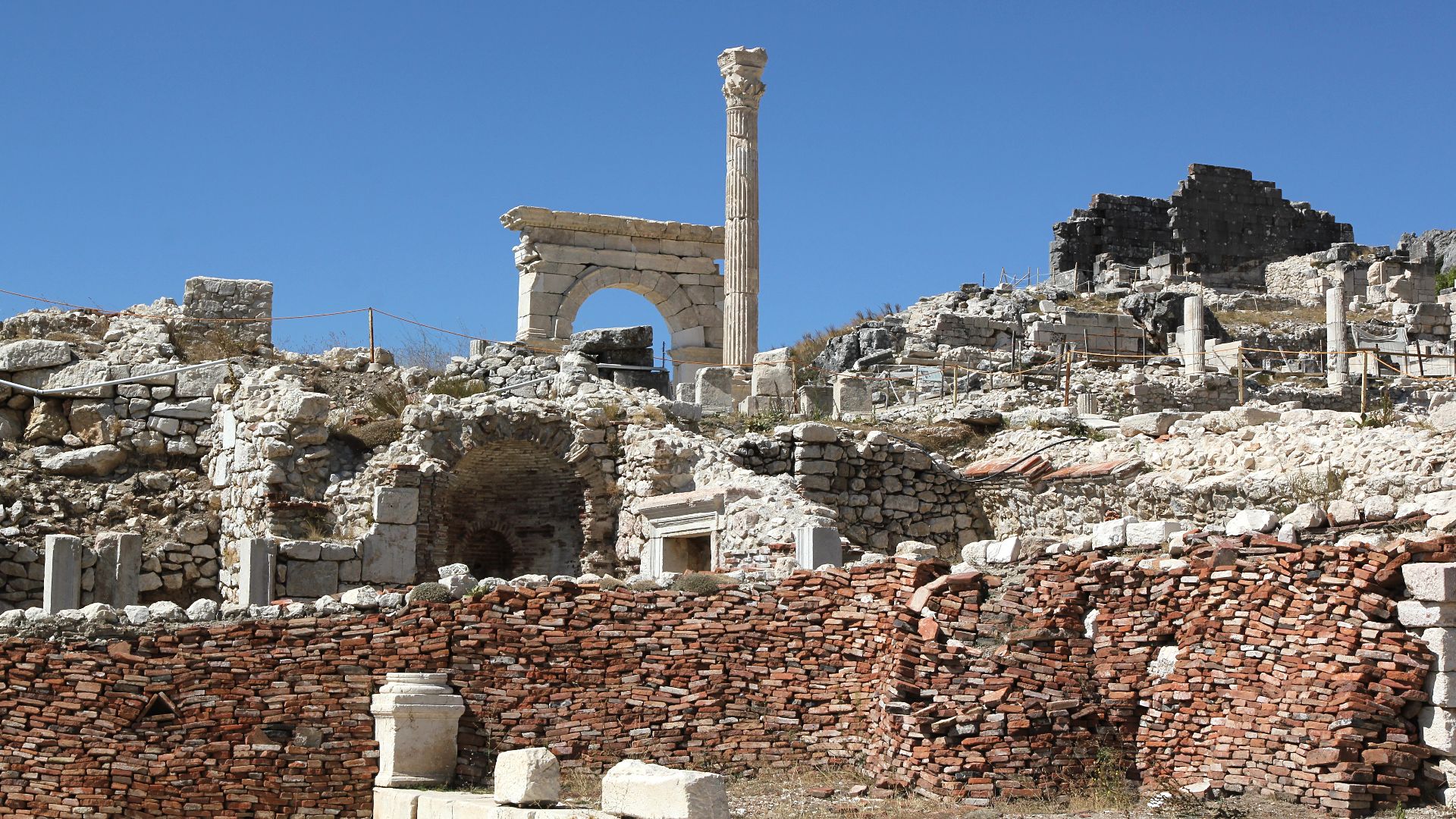 Ingeborg Simon, Wikimedia Commons
Ingeborg Simon, Wikimedia Commons
Protected Past
After an early survey of the site, Sagalassos was designated a protected site by the Turkish government in 1985. As excavations proceeded, the site became bigger, and the significance of the finds became apparent.
Over 30 Years Of Digging
Since 1990, a major excavation and rebuilding of the site has been underway. Entire sections of the city have been exposed, including the city center. Part of the research involves studying the layout of the city, an early example of urban planning.
Heads I Win
In 2007, an incredible artistic discovery occurred. A highly detailed bust, part of a larger statue of Emperor Hadrian, was recovered from the ruins. Based on the size of the head, the entire statue is thought to have stood about 4.8 meters (16 feet) high.
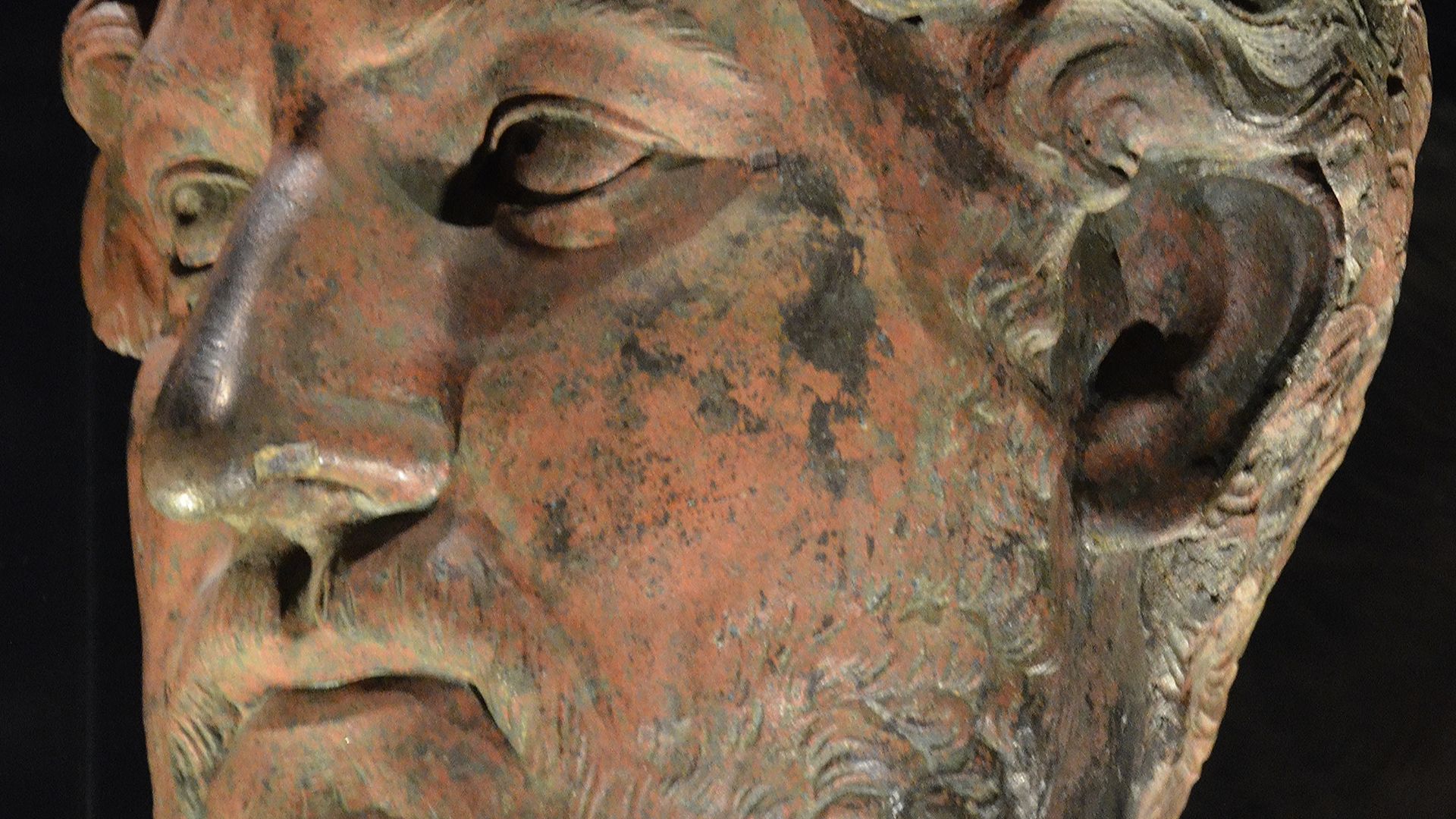 Carole Raddato from FRANKFURT, Germany, Wikimedia Commons
Carole Raddato from FRANKFURT, Germany, Wikimedia Commons
A Potential Pair
A later discovery, this time of some rather large carved toes, led archaeologists to think that there may be a partner for the giant statue of Hadrian. Evidence on the found foot suggests it might be that of Sabina, the consort of Emperor Hadrian.
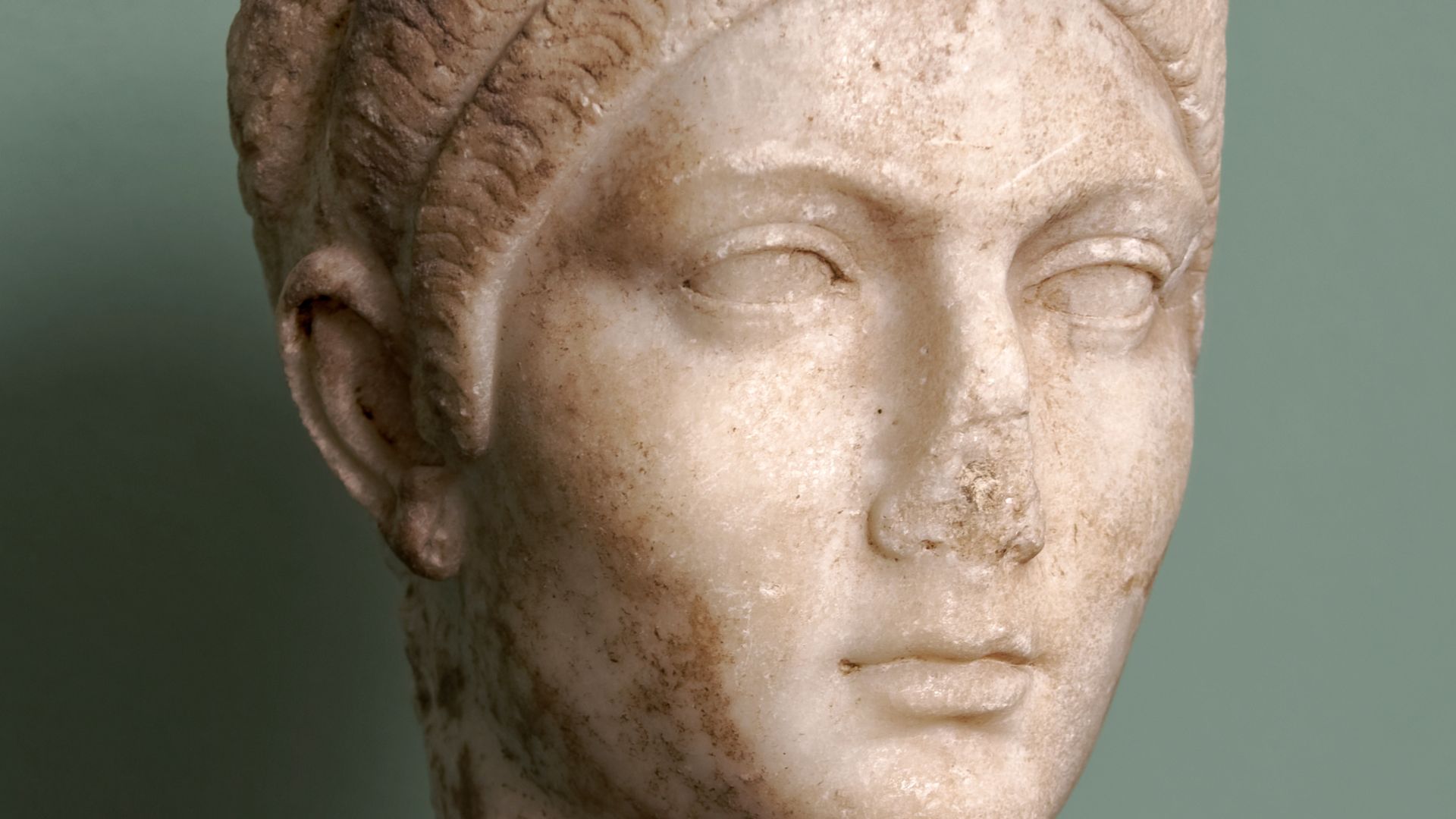 Jakub Halun, Wikimedia Commons
Jakub Halun, Wikimedia Commons
A Heady Time
A couple more busts of remarkable artistry were discovered over the next year or so. The first is of Faustina the Elder, wife of Hadrian’s successor. The second is a portrait of Roman emperor Marcus Aurelius.
Heritage Potential
In 2009, the Turkish Ministry of Culture and Tourism submitted a proposal for making Sagalassos a UNESCO World Heritage Site. Citing the 12,000-year habitation of the region, the Turkish ministry suggests that Sagalassos is an important piece of human history.
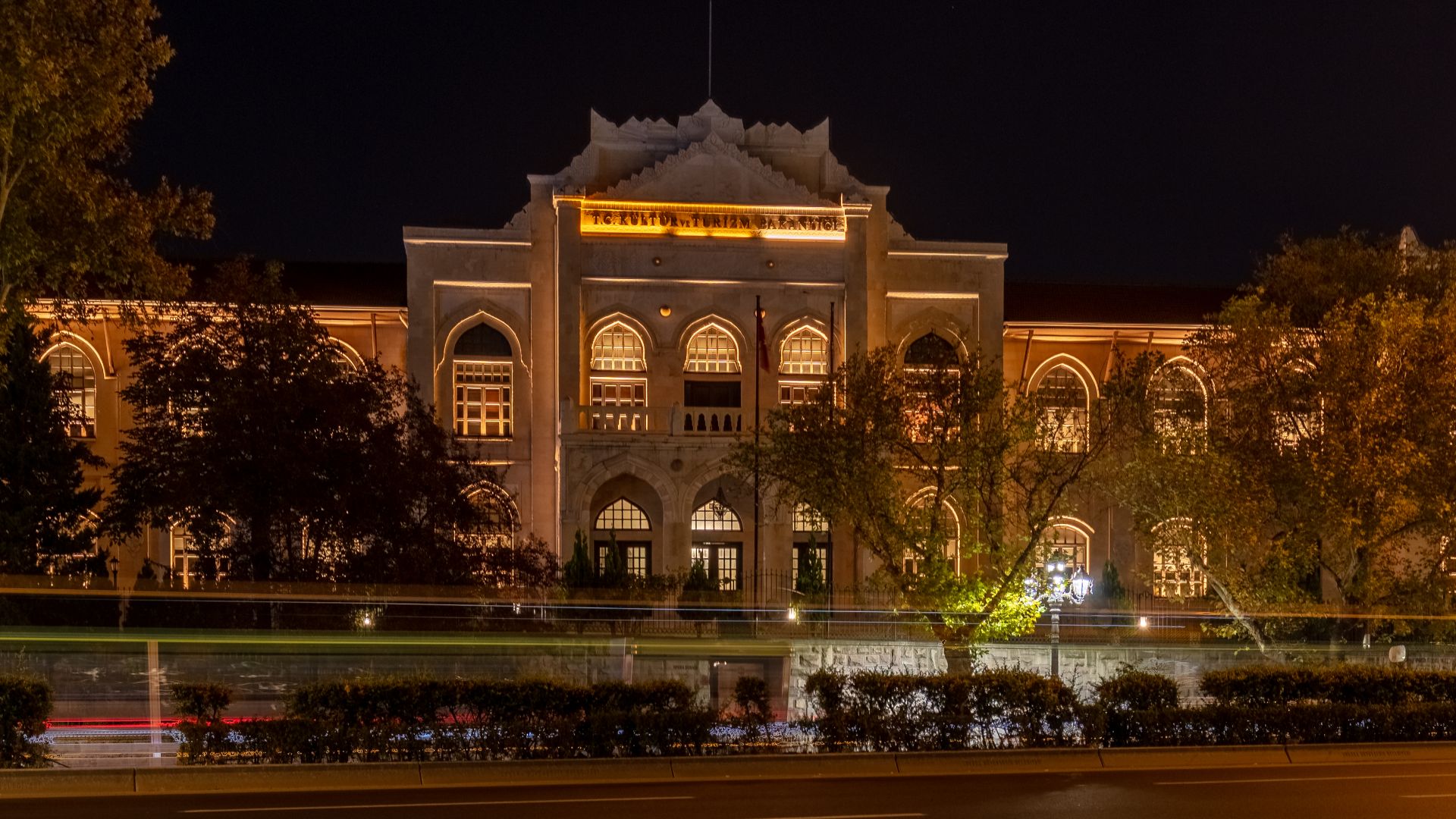 Diego Delso, Wikimedia Commons
Diego Delso, Wikimedia Commons
A Wonder Of Planning
Sometimes we mistake ancient for undeveloped. But one of the primary criteria of the Turkish ministry’s document is the remarkable planning of the city of Sagalassos. Given the terrain conditions, the city is something of a marvel.
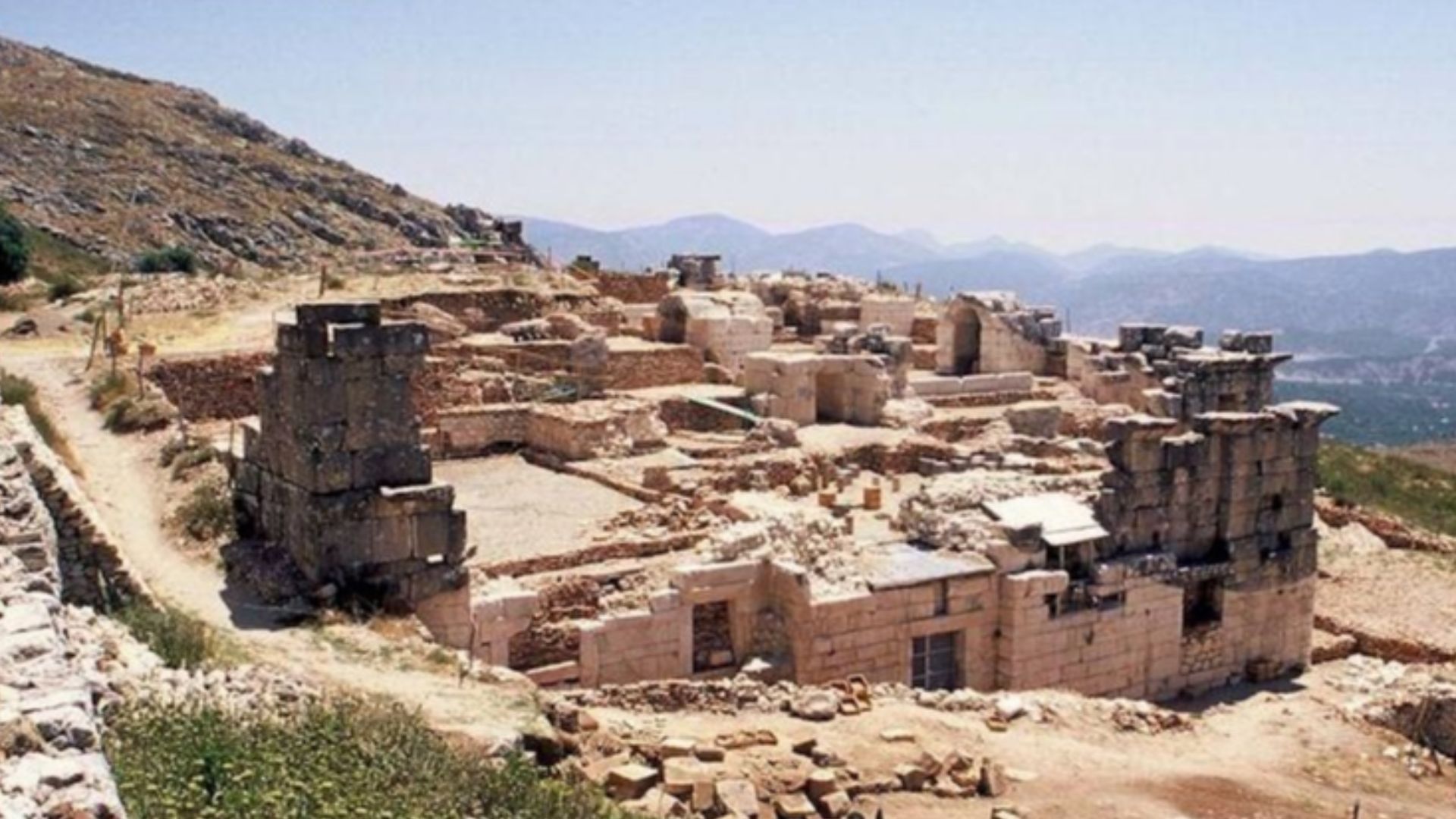 hursitakinci, Wikimedia Commons
hursitakinci, Wikimedia Commons
Integrating Nature
The hilly Pisidia region might not be the best place to build a city, but the builders of Sagalassos knew a good thing when they saw one. Hills and mountain slopes were integrated into the layout of the city, providing natural terraces and amphitheaters.
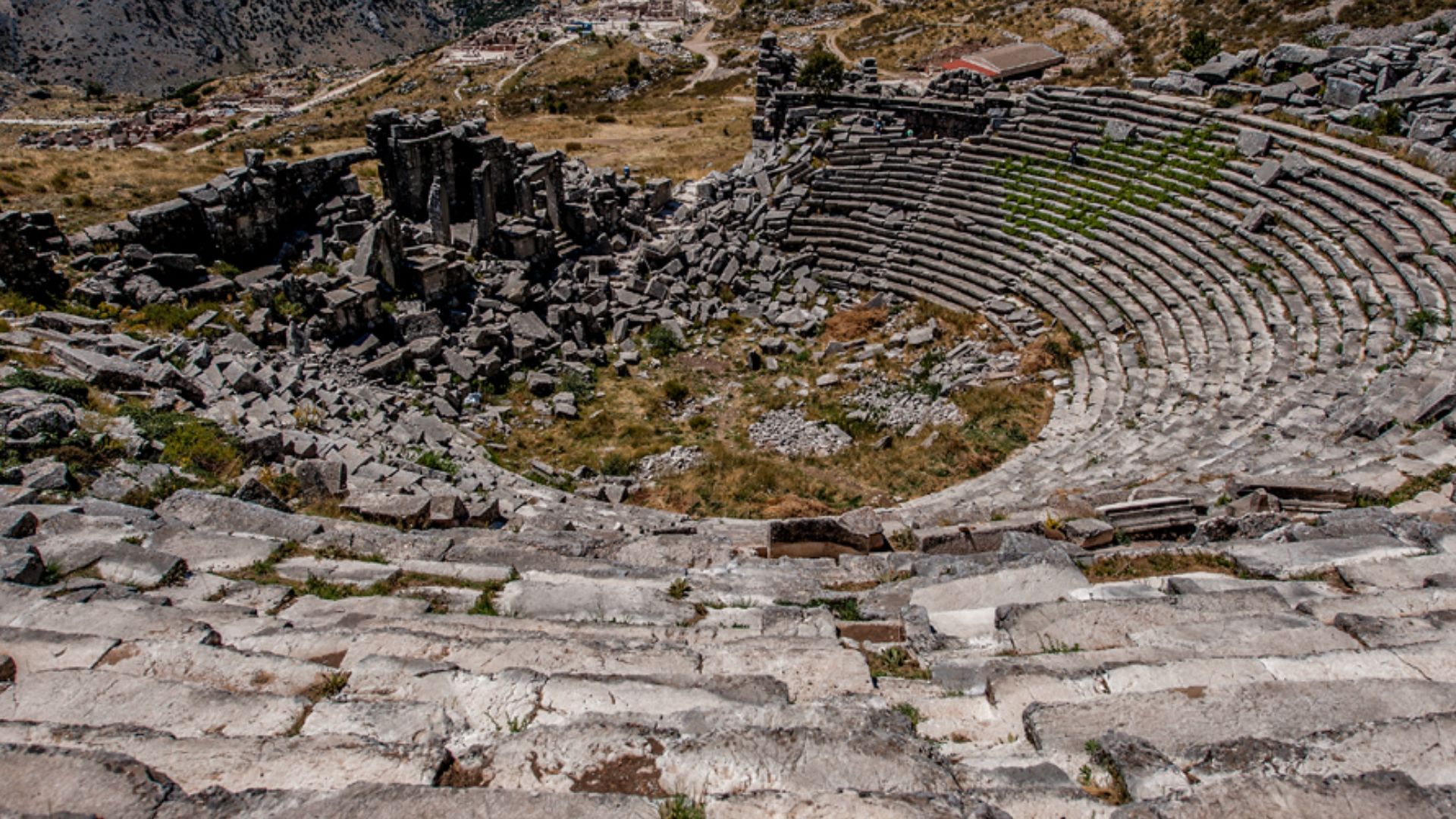 The original uploader was Marjikal at Turkish Wikipedia., Wikimedia Commons
The original uploader was Marjikal at Turkish Wikipedia., Wikimedia Commons
Amazing Architecture
Incredible feats of architecture dot the city. Roman baths, for which the hilltops were enlarged with underground rooms! Fountains covering the sides of hills cut away for public squares! An underground drainage system!
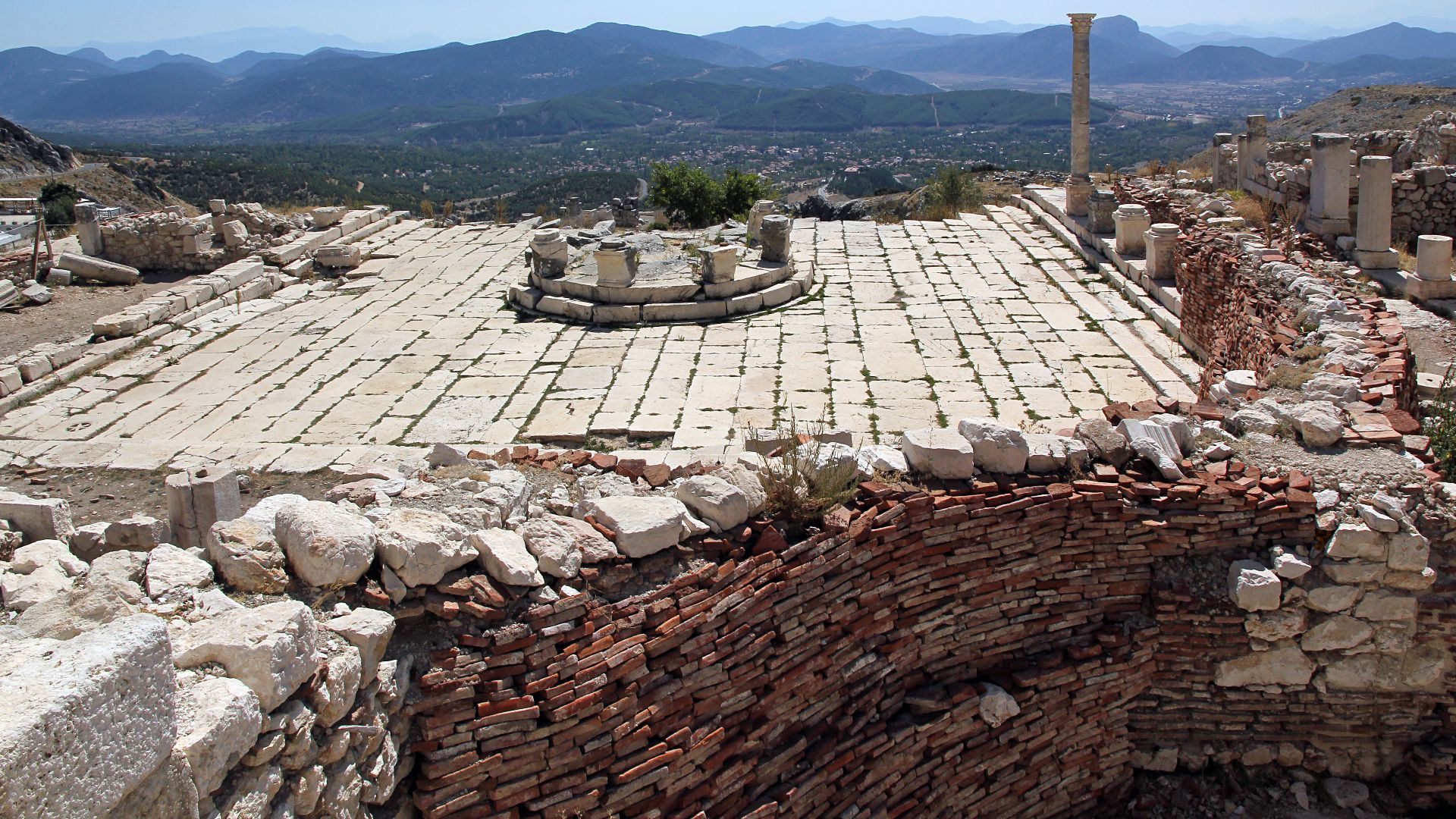 Ingeborg Simon, Wikimedia Commons
Ingeborg Simon, Wikimedia Commons
Water, Water, Everywhere
The ancient city of Sagalassos also had a very wise relationship with surrounding waters. A complex system ensured that water could be used for fountains, for farming, and for drinking, and it was all recycled and maintained.
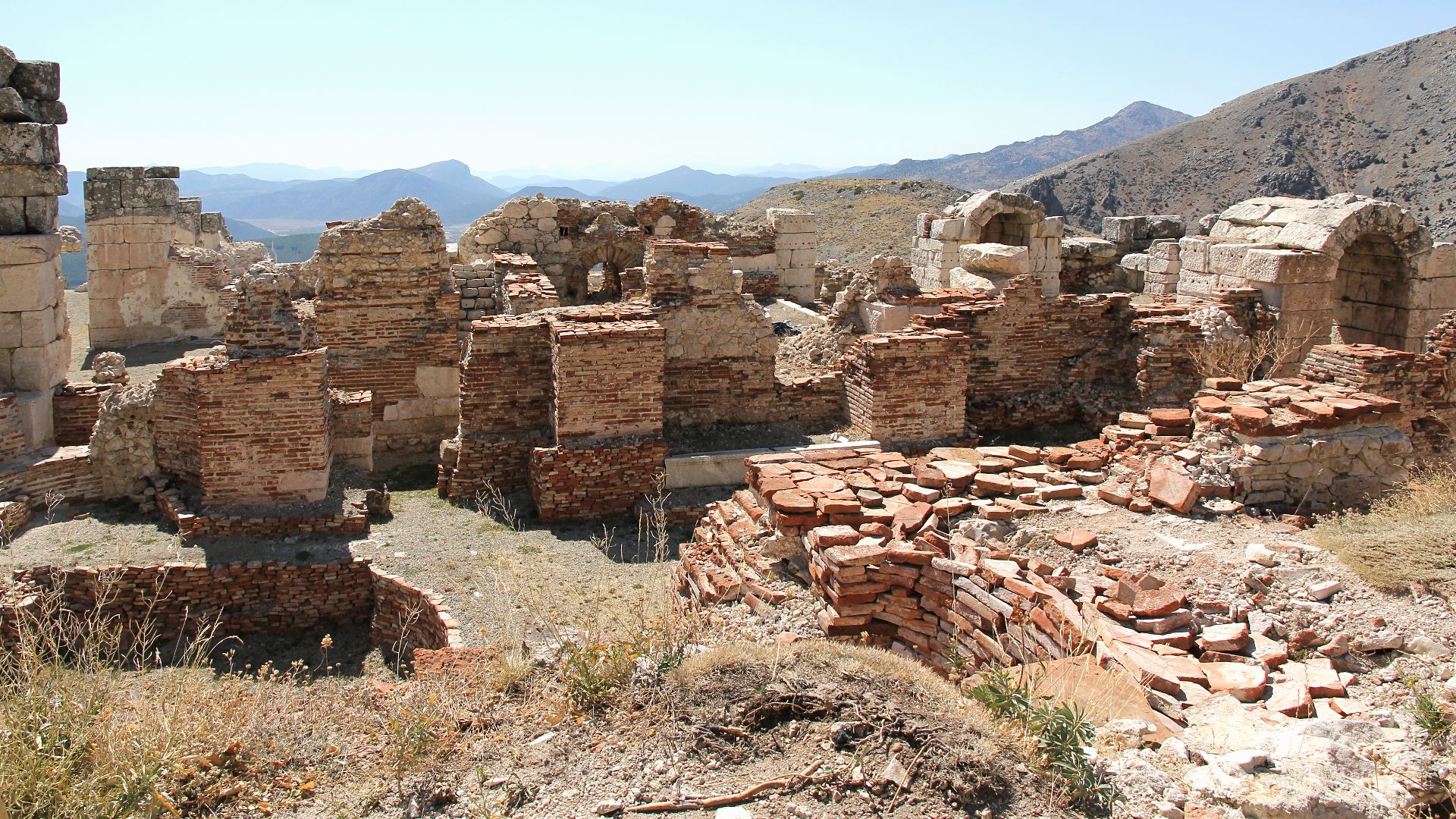 Ingeborg Simon, Wikimedia Commons
Ingeborg Simon, Wikimedia Commons
Traces Of The West
Much of the surviving decorative architecture is very Roman in character. Specifically, as Pisidia was part of the Western Empire, the city displays examples of that Empire’s influences and styles. As a prosperous city, Sagalassos was both rich and beautiful.
The Monumental Hall
The hall of the Roman baths in Sagalasso has been one of the most fertile archaeological sites. The previously mentioned busts were found in this area, and, as of submitting the UNESCO application, only half of the hall had been excavated. More amazing finds are expected.
Pottery Producers
Sagalassos’ situation near clay beds made the city a center of pottery production. Craftspeople made pottery in the region for at least a thousand years! The area is dotted with ancient kilns and workshops, producers of the Sagalassos red slip ware.
Tech + Art
The unique nature of the pottery produced at Sagalassos is useful not only in understanding techniques the artisans used, but also the artistic and creative drives of those artisans. This helps historians understand who the people were and how they lived.
A Teaching Site
The unique nature of Sagalassos, its remarkable preservation, has made it a shining example of 21st century archaeology. The site has become a useful training ground for many scholars involved in historical and geographical research.
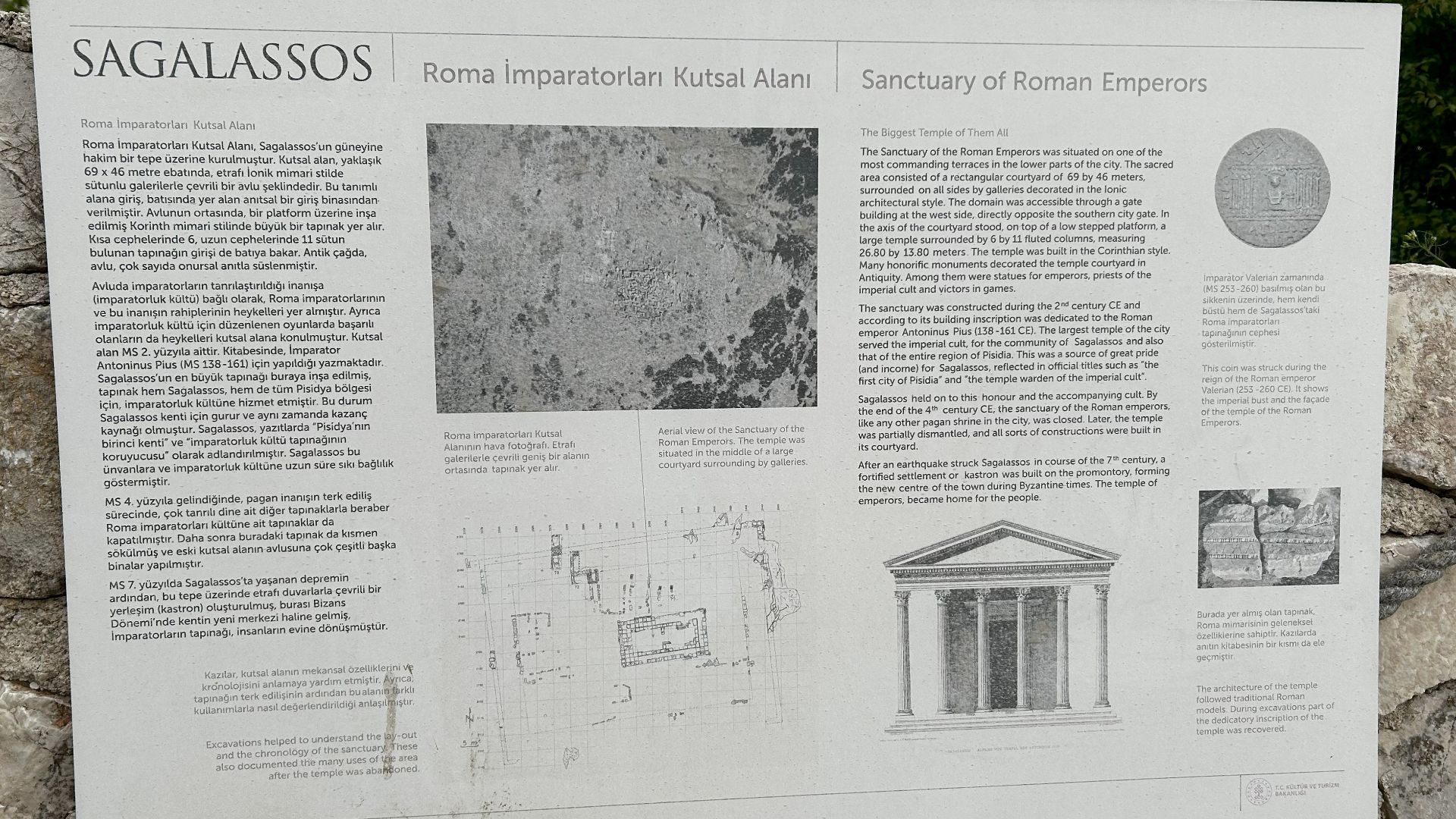 KaramurverOzu, Wikimedia Commons
KaramurverOzu, Wikimedia Commons
An Evolving Past
One of the most fascinating aspects of the Sagalassos excavation is that it paints a picture not only of the city when it was abandoned, but of its past as well. As archaeologists dig deeper, more and more of the city’s thousand-year history comes to light.
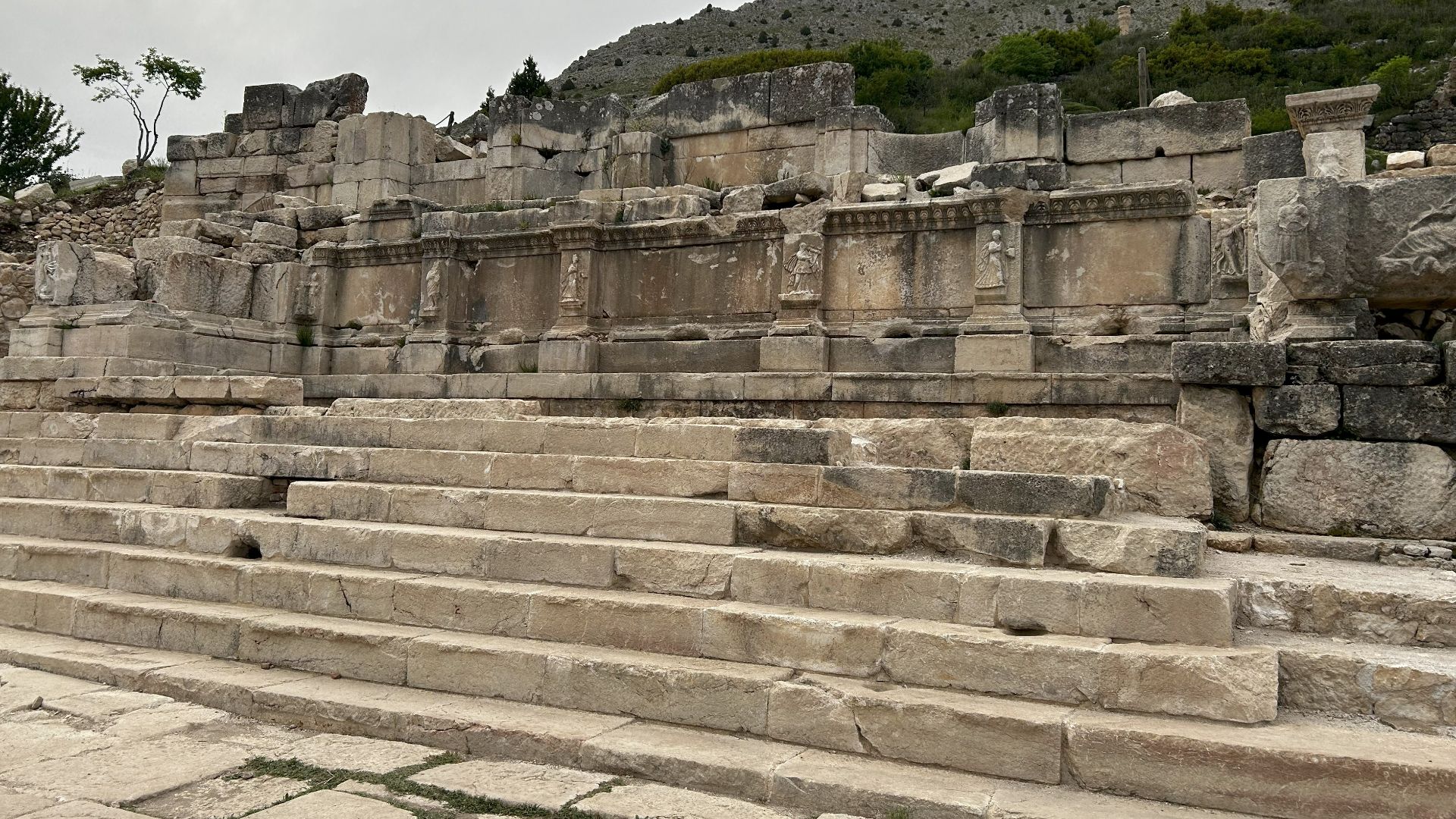 KaramurverOzu, Wikimedia Commons
KaramurverOzu, Wikimedia Commons
Beyond The City
It’s not only the ancient city that holds interest for archaeologists and historians. Research in the surrounding area has helped scientists understand how the area was home to humans for over 10,000 years.
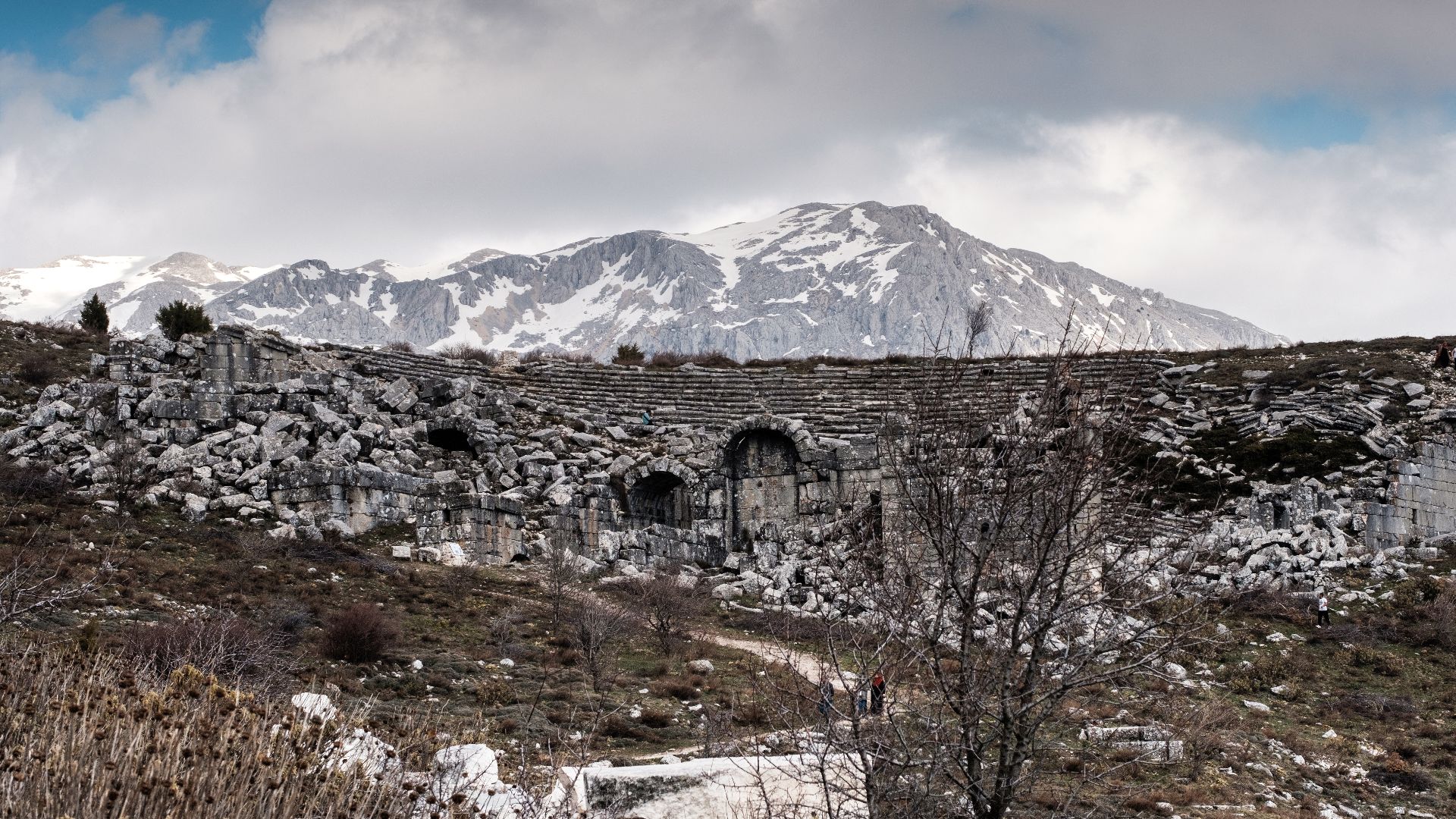 LeoniKalkis, Wikimedia Commons
LeoniKalkis, Wikimedia Commons
The Future Of The Past
What does the future hold for Sagalassos? Turkish officials would like to see the excavation of this unique site continued for many years to come. There is also talk of opening the site for eco-tourism, as Sagalassos provides a glimpse into the past unlike any other.
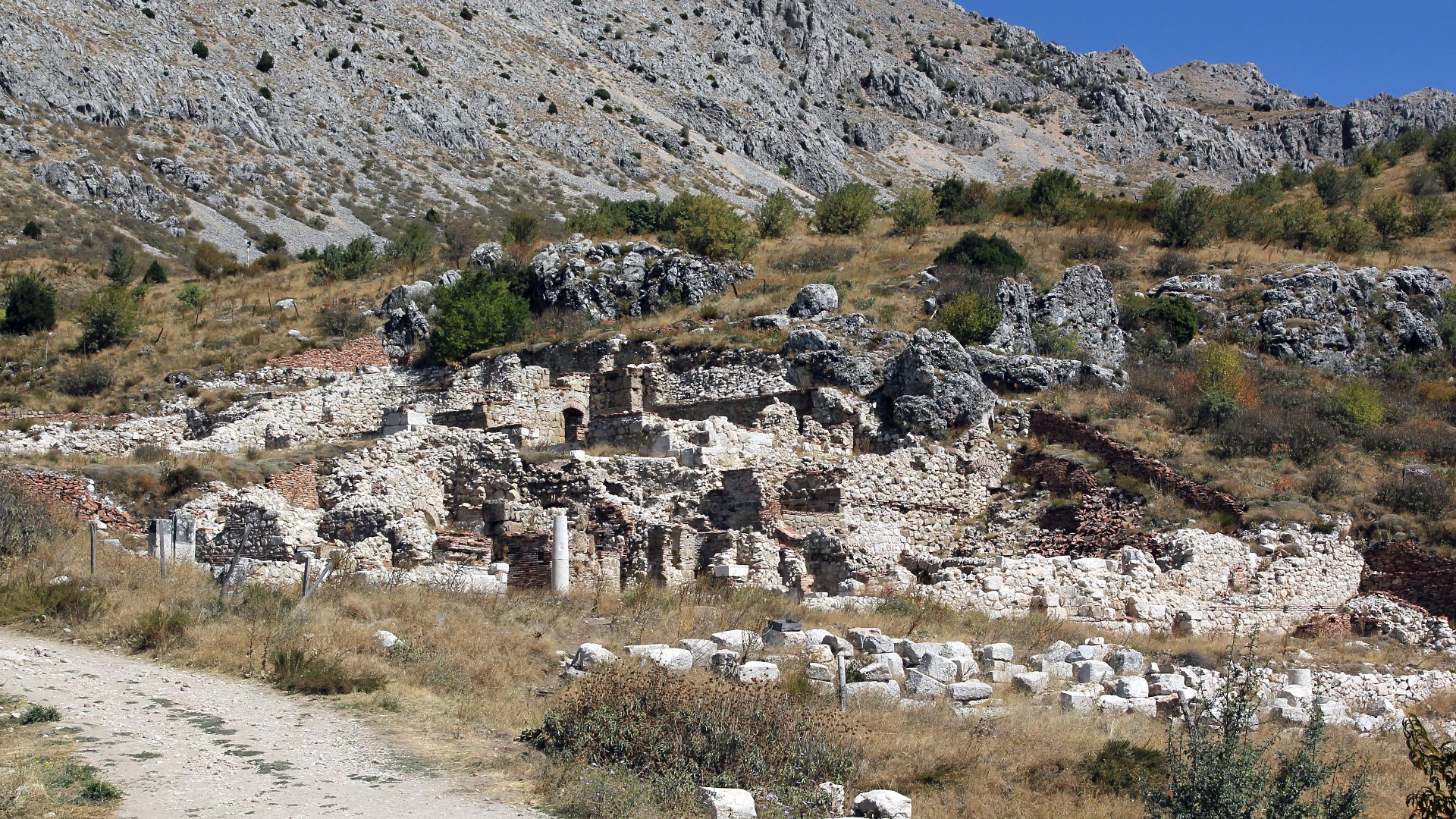 Ingeborg Simon, Wikimedia Commons
Ingeborg Simon, Wikimedia Commons
You May Also Like:
Breathtaking Images Of The World’s Most Important Landmarks
The Famous Alexander The Great Mosaic Has Finally Been Analyzed
The Bandelier National Monument Revealed New Details About The Ancestral Puebloans

